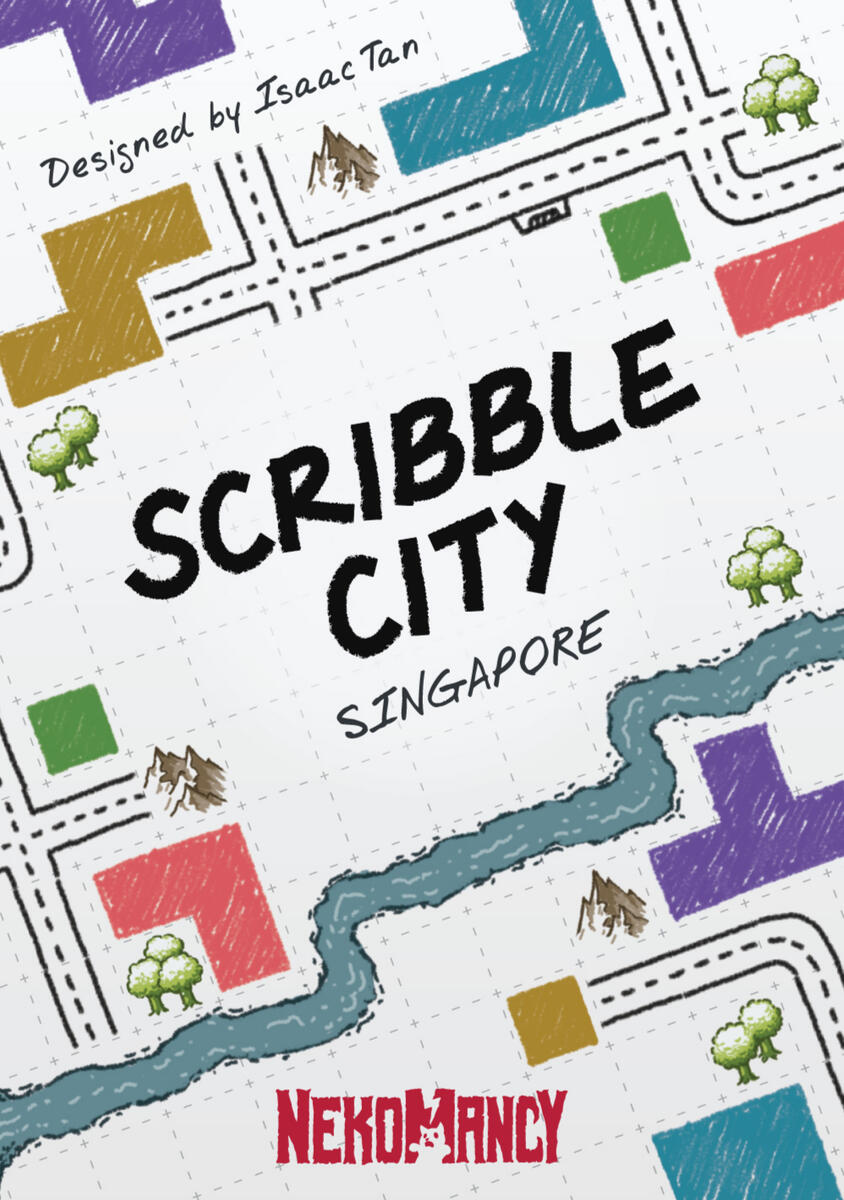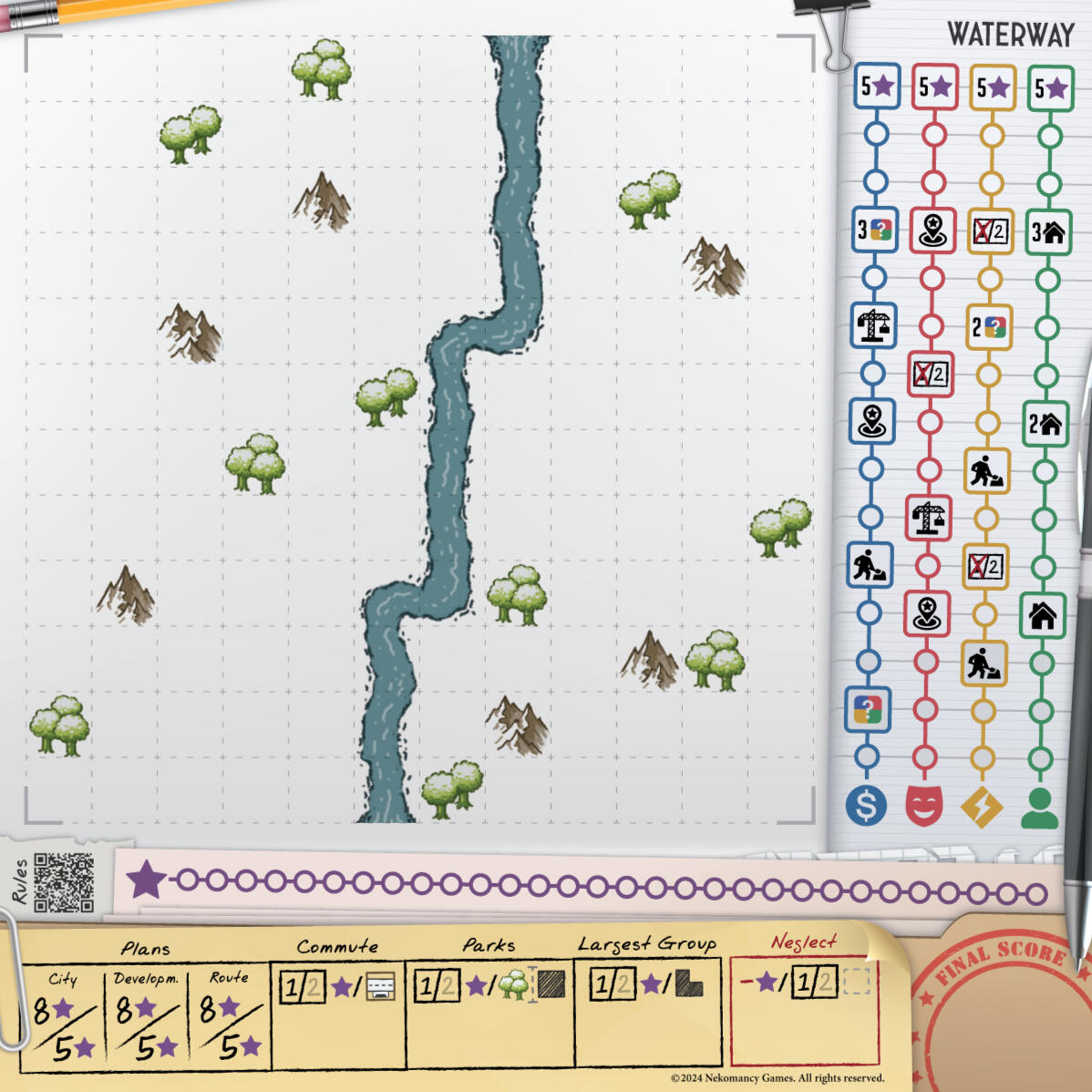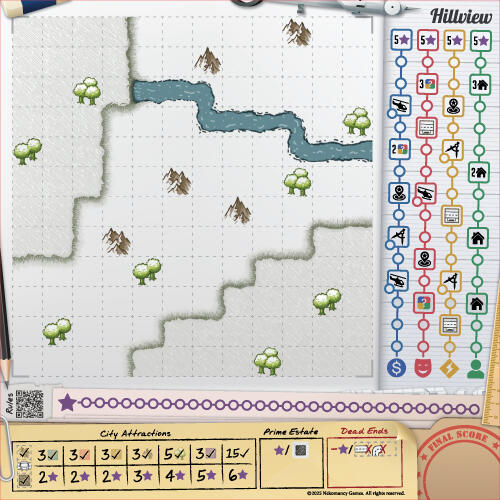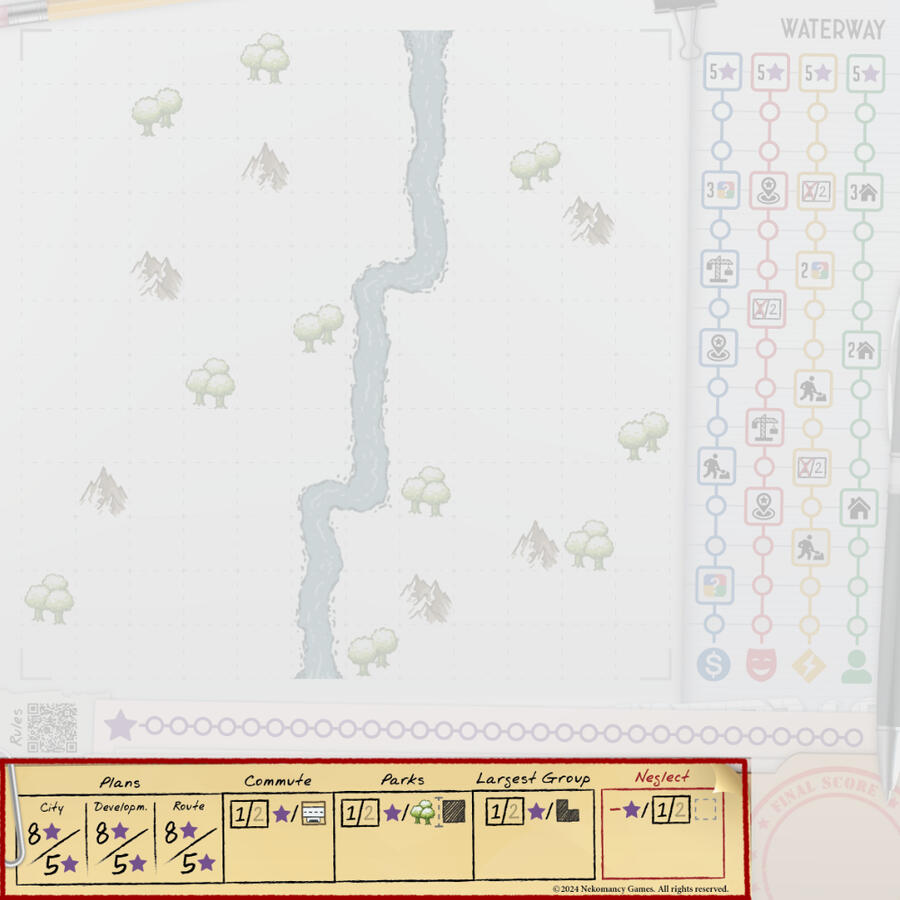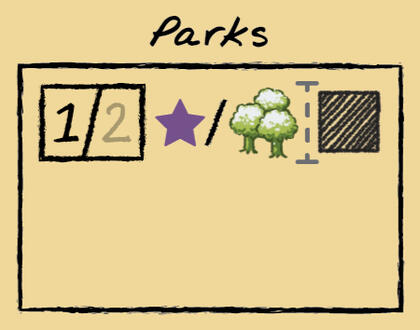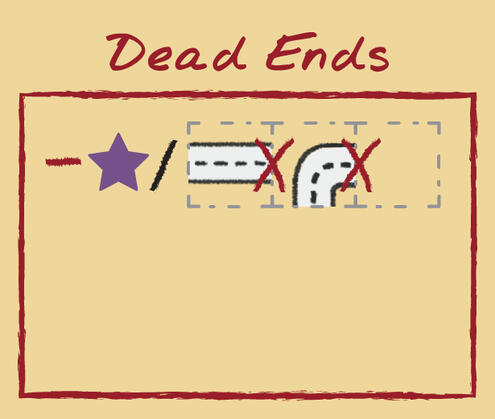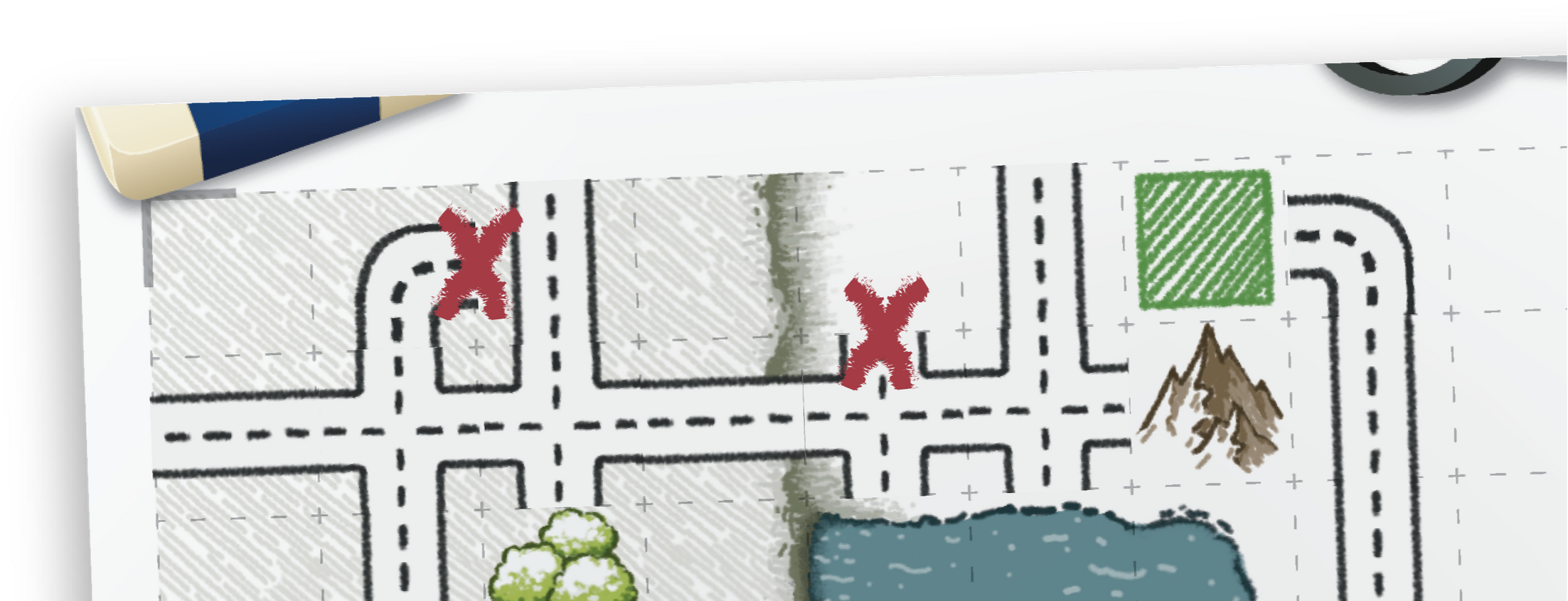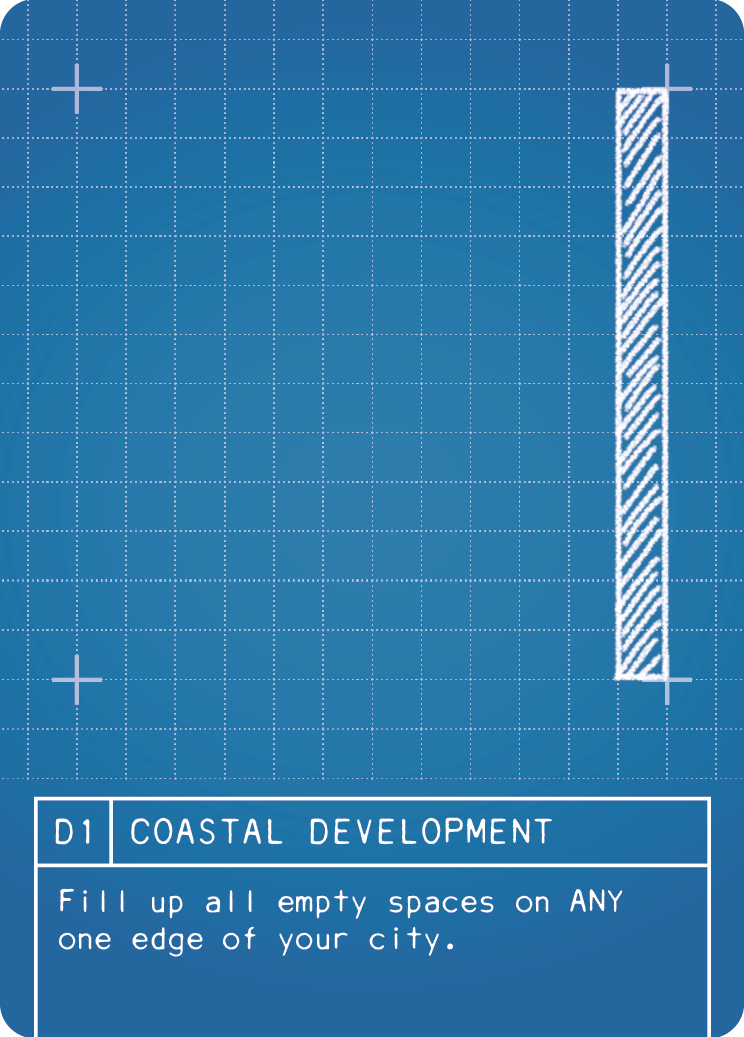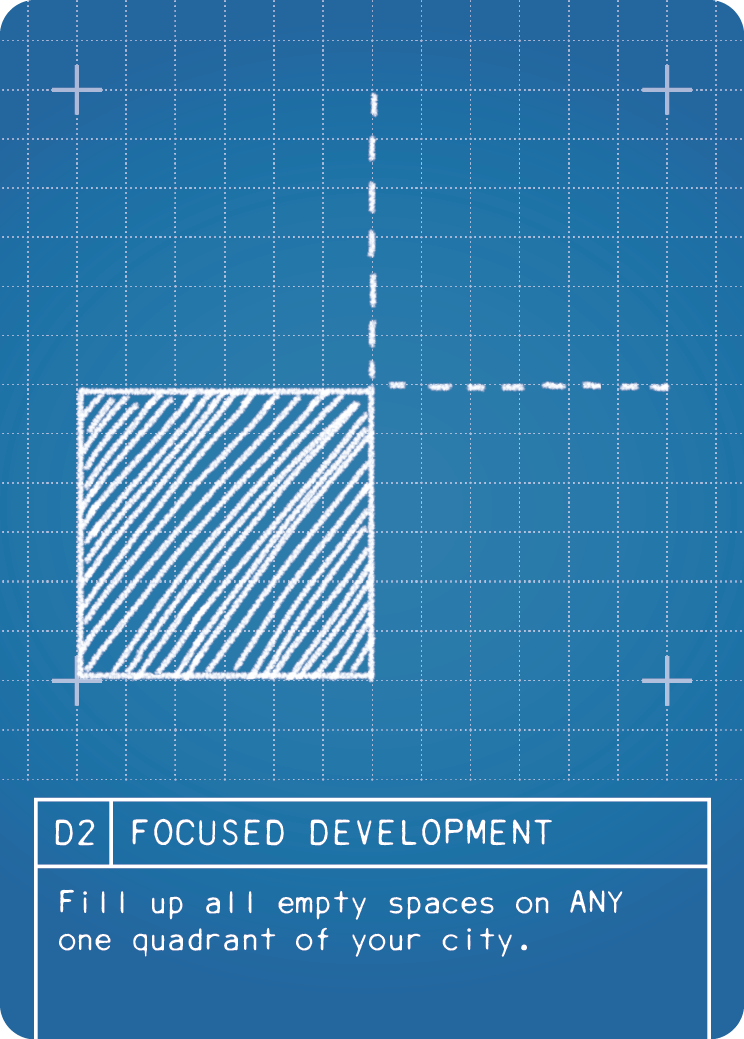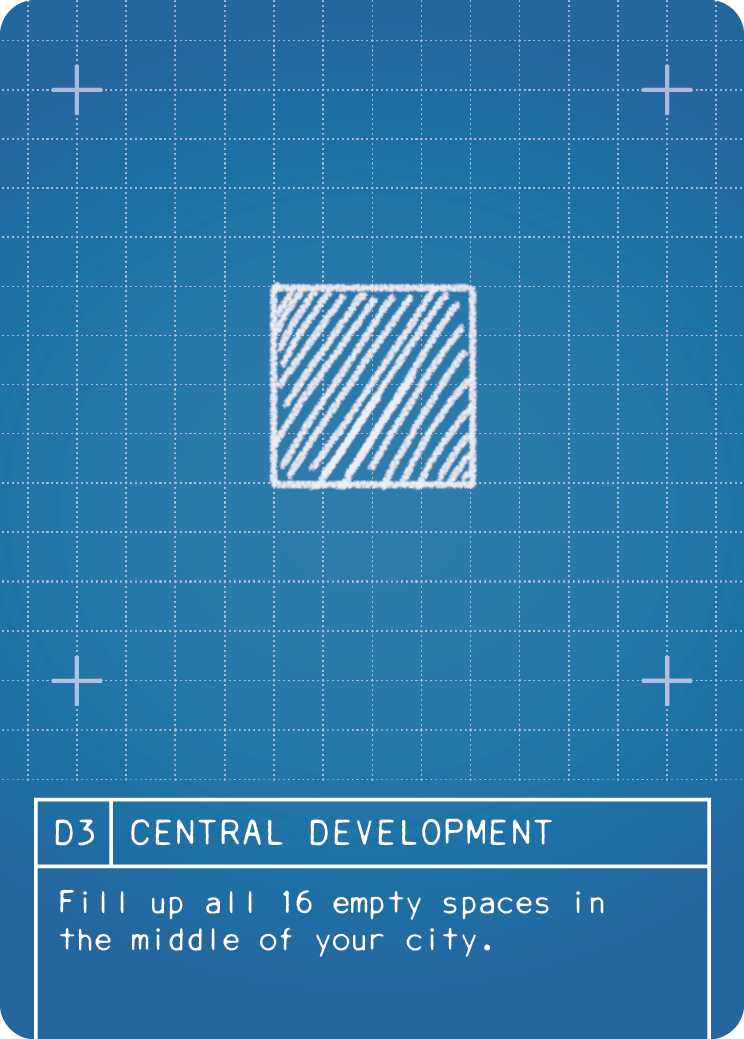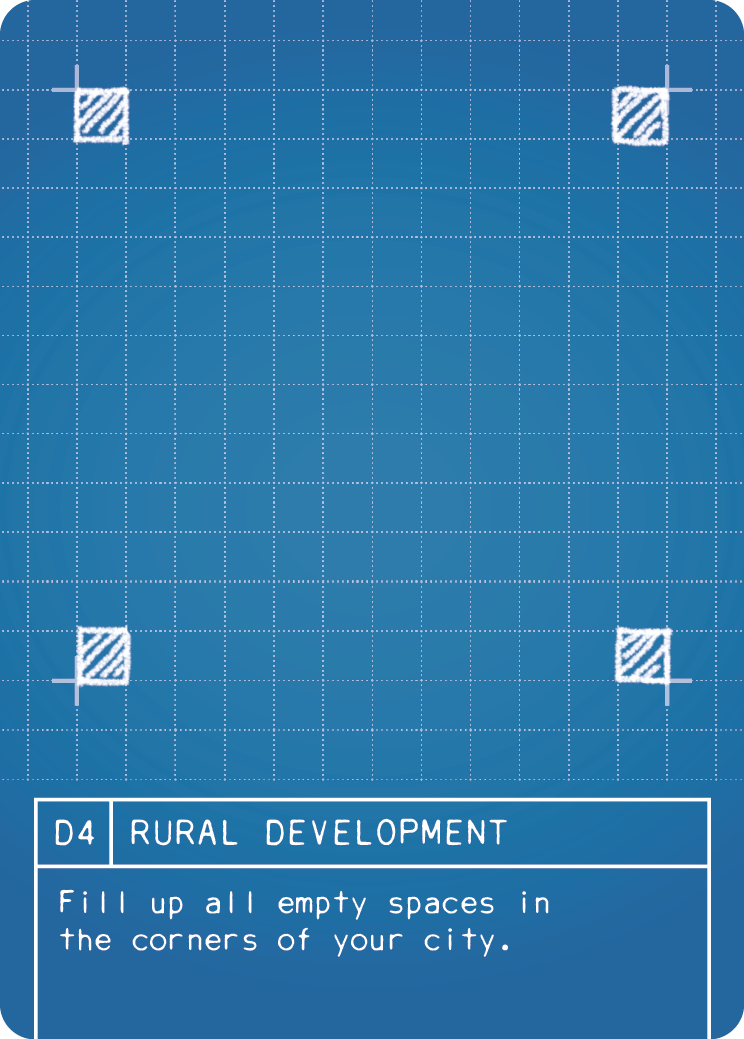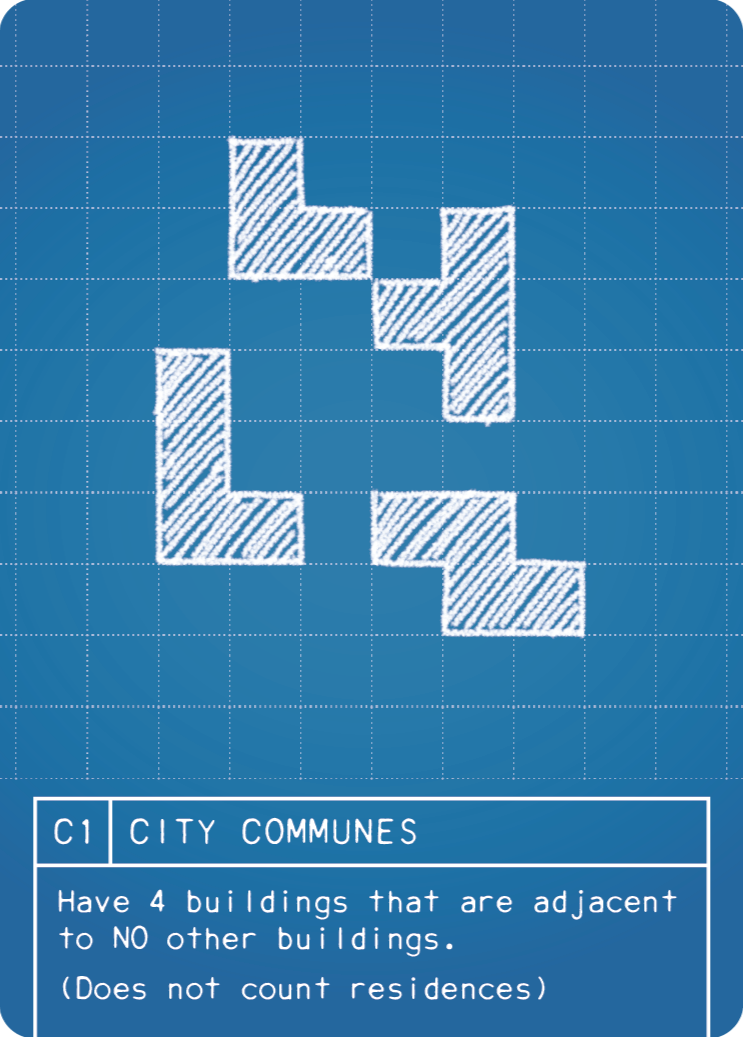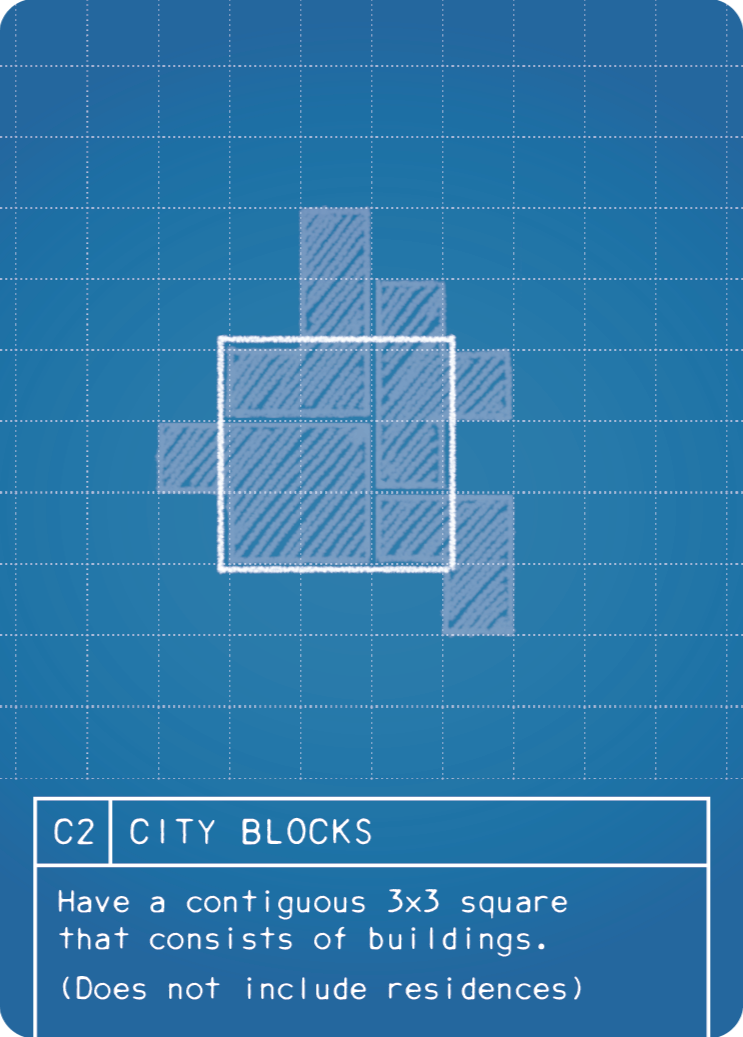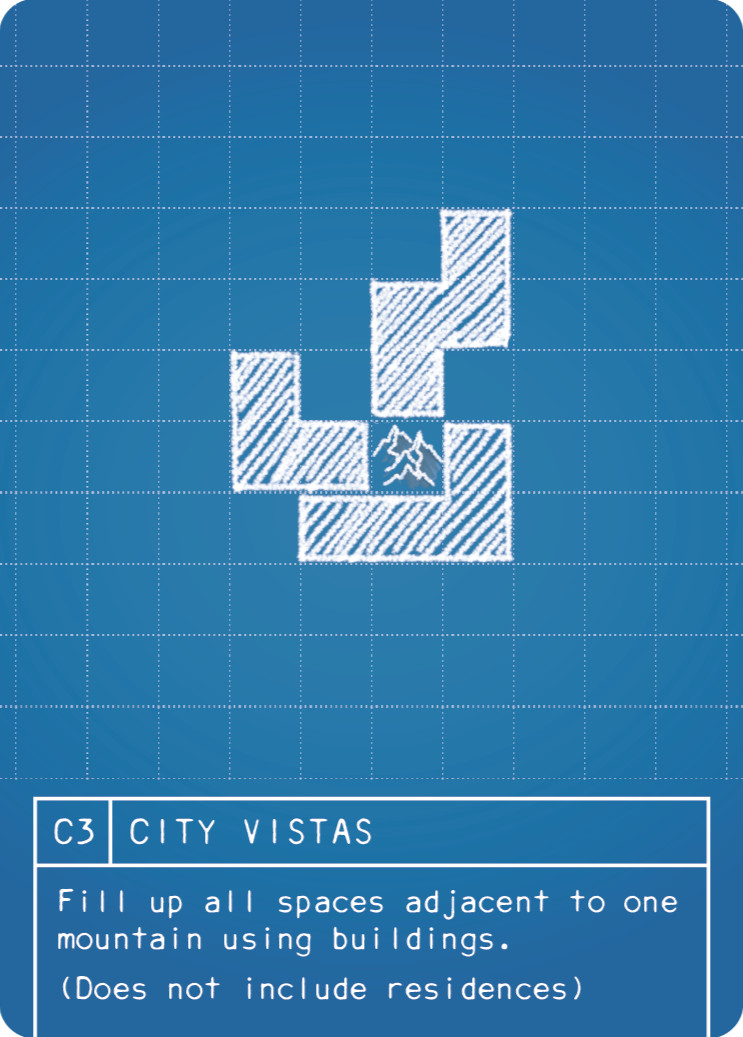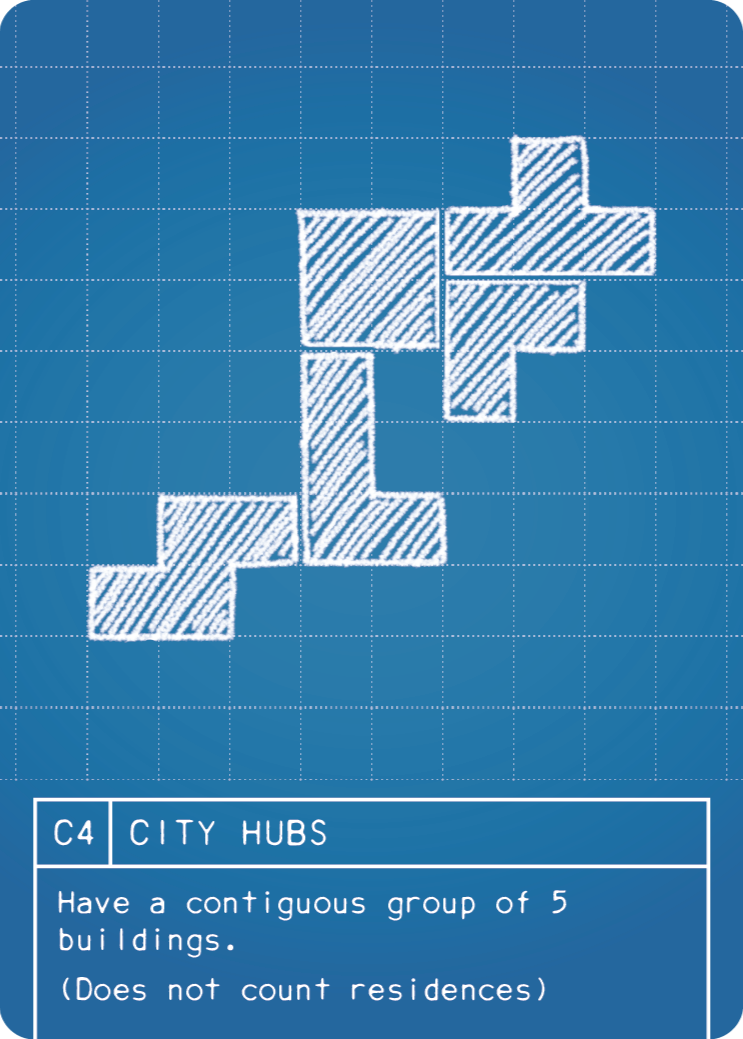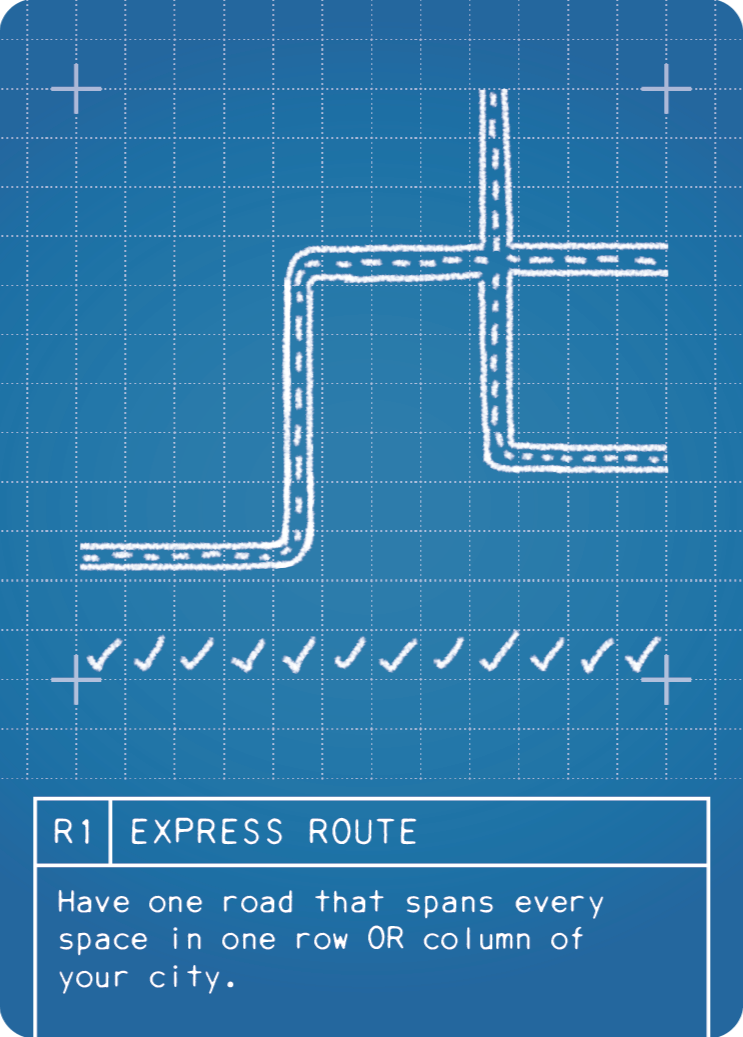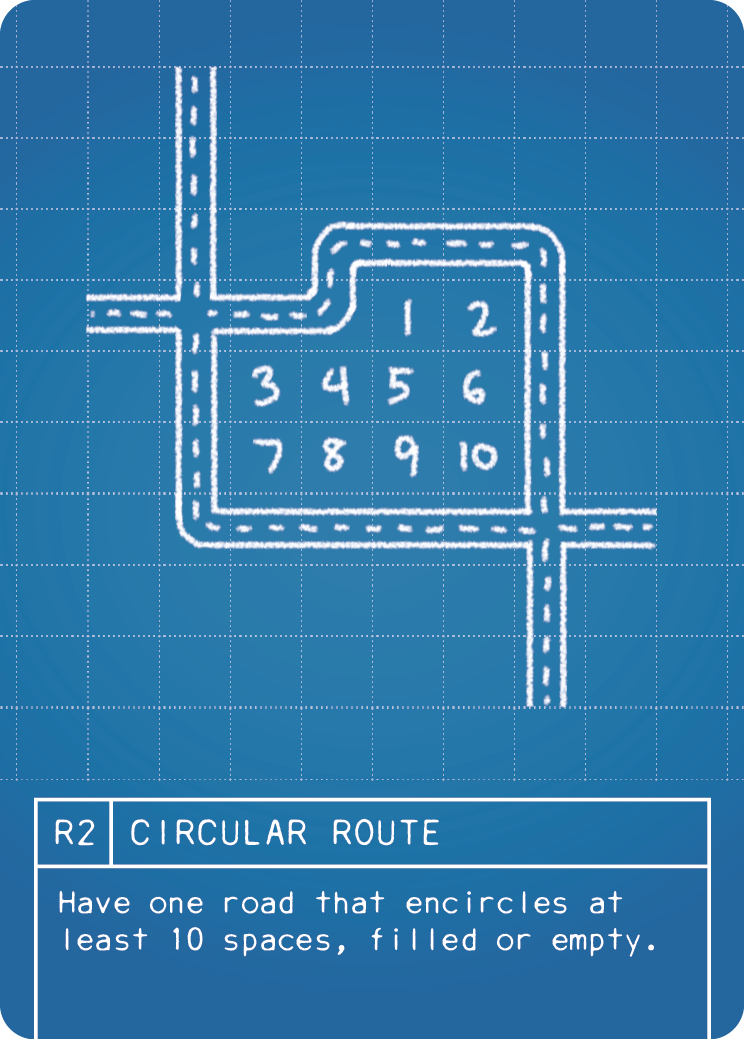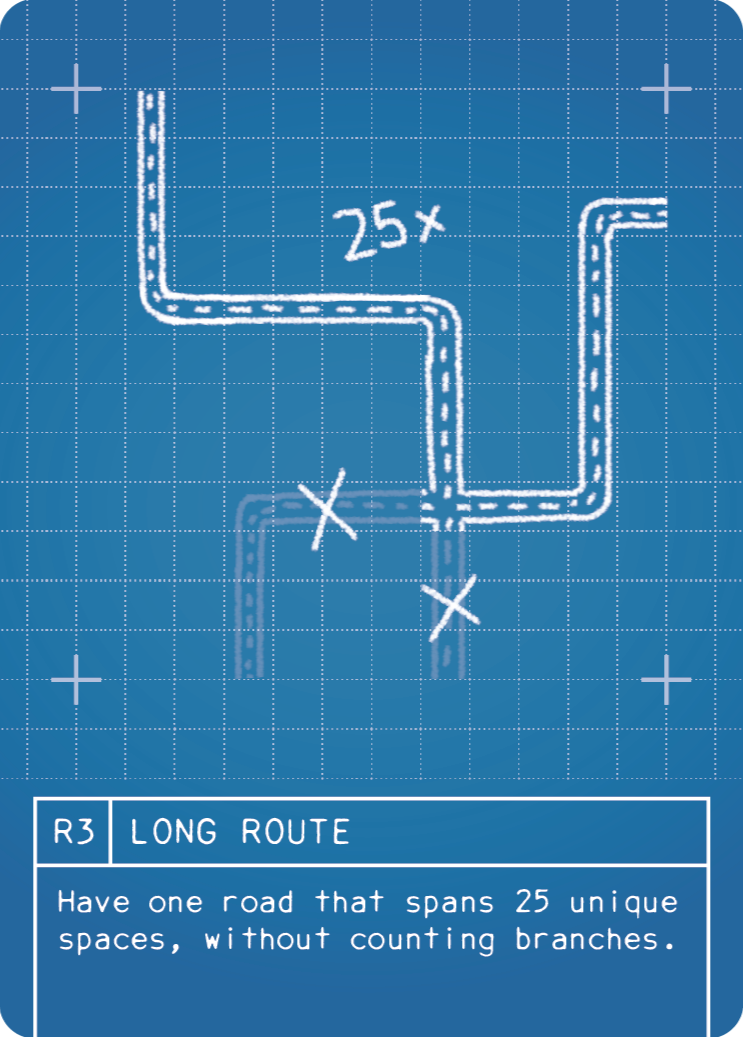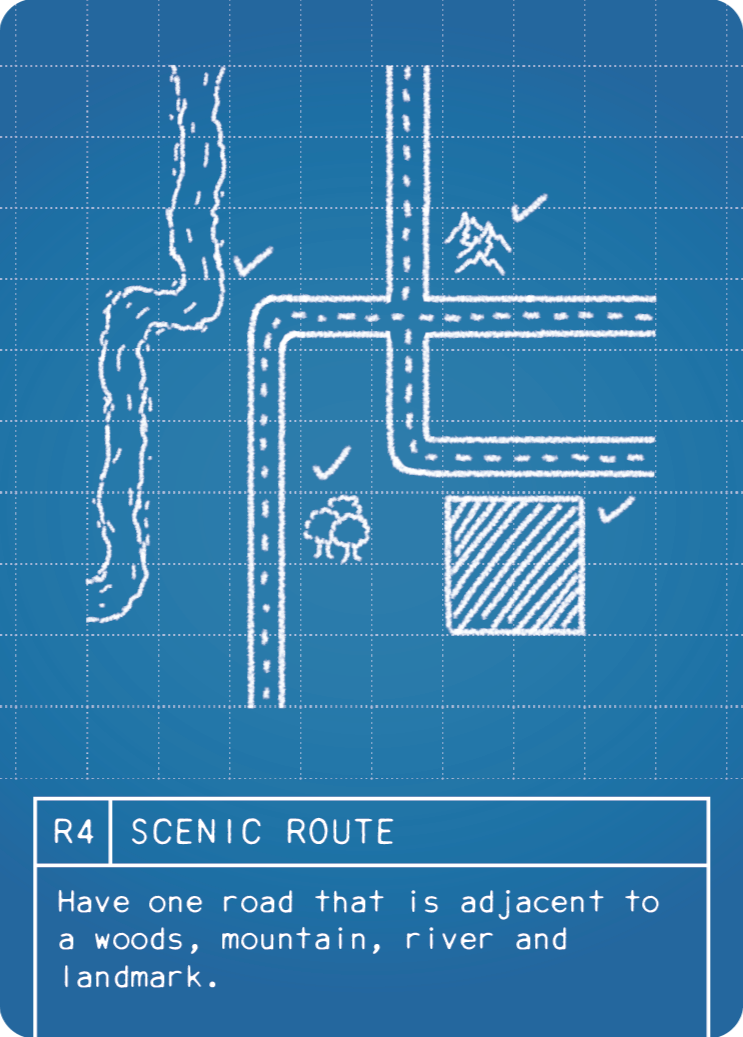

Welcome to your new city!
As the mayor of a new town, you decide where and what gets built. Place buildings and roads to fulfill the requirements of Plans. As you grow, so do your progress tracks, granting you rewards the higher the go. Do your best to build the best city, as the player with the most prestigious city wins the game!Scribble City is a city-building drawing game for 1 to 4 players that plays in 60 minutes.
Customize your experience!
To play Scribble City, you need three things: A city deck, a map pack, and colored pencils.You can mix and match city decks and map packs for different gameplay experiences. Each city deck and map pack comes with their own unique mechanics and features, offering a variety of ways to play.Not sure where to start? Check out our handy product guide below!
Product Guide
To play, you need a city deck, a map pack, and coloured Pencils.

Hover over or tap on each product's image to learn more about it.

The Singapore Deck is a low-complexity set that introduces the basic concepts of Scribble City.
It introduces Placement Bonuses, Bridges, and Tunnels.
Recommended for beginners and players new to Scribble City.
The Waterway Map is a low-complexity map that focuses on the core mechanics of Scribble City.
It features scoring bonuses that reward players who build thoughtfully.
Recommended for players who enjoy combos and light interaction.
The Hillview Map is a medium-complexity map that challenges players to build bus routes across their city.
It introduces hills, a new feature type, and triggered rewards.
Recommended for players who enjoy optimization puzzles.
Buildings
Buildings are a type of card that are used to build buildings and roads on the map. Each card has the following elements:(1) Type (and color)
(2) Name
(3) Era
(4) The building's shape
(5) Benefits
(6) Placement bonuses (if any)
(7) A set of roads.At the start of each Era, players are dealt three building cards each. Any leftover cards are returned to the box. During each round of the game, players will choose two cards from their hands, one to build a building, one to build a set of roads. The remaining, unselected card is reserved.To build a building, take the coloured pencil matching the type/color of the building, then draw the indicated shape into your city. Important: Buildings must always be built adjacent to a road.Players may rotate their shapes, but they cannot flip them. Mistakes or misplacements made in the current round may be corrected, but you cannot redo or build over buildings and/or roads from previous rounds.Once built, gain any benefits and placement bonuses shown, if any.A player must build a building when instructed to, even if it would force them to build over features. If unable to because of space limitations, they instead build a residence.
Tags: Buildings
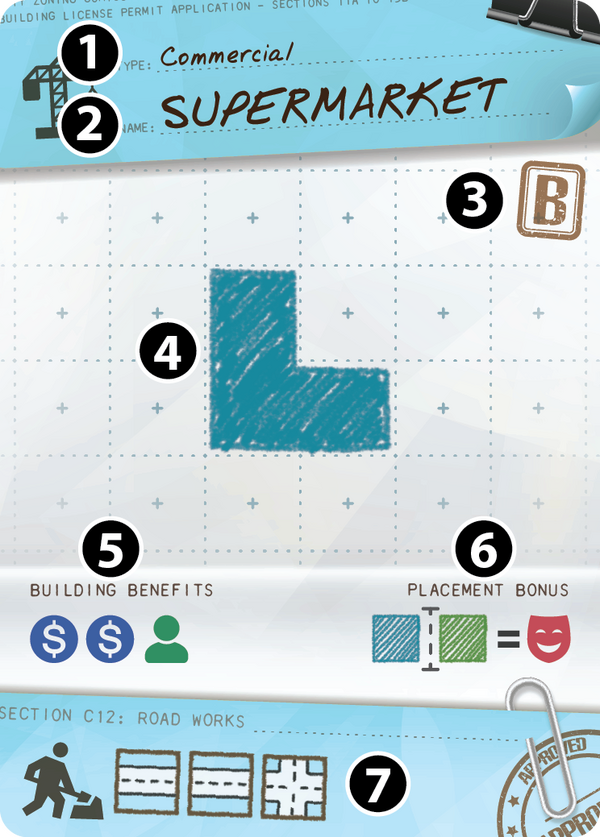
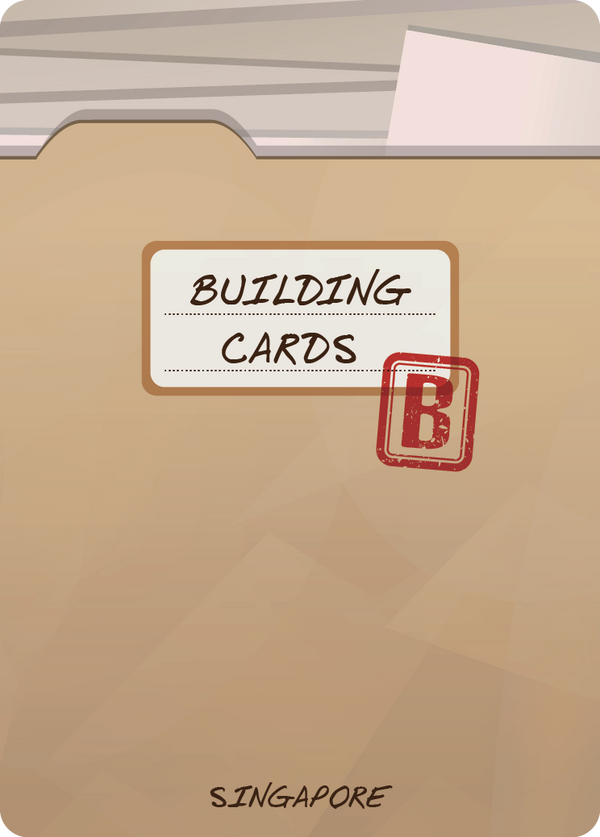
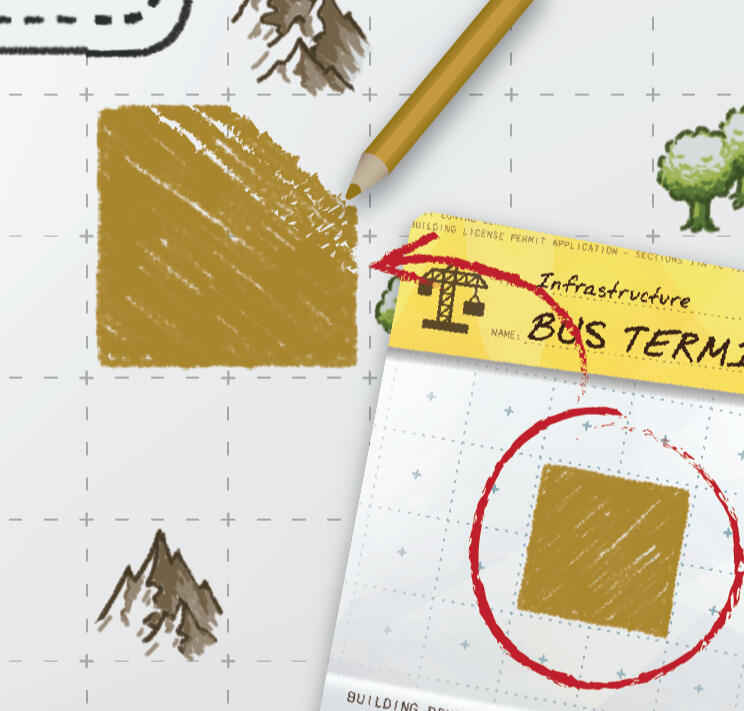
Setup
To setup a game of Scribble City, perform the following steps in order:(1) Separate all cards by their card backs. Shuffle each deck.(2) Choose a map to play on, and give each player one sheet.(3) From the plan cards, randomly choose one from each type (City, Development, Route) and reveal them. Return the rest to the box, they will not be used in this game.(4) Give each player three landmarks, one each from decks 1, 2 and 3. Return the rest to the box, they will not be used in this game.(5) Give each player one black pencil, then place the other coloured pencils in a central position within reach of all players.(6) Give each player a set of reference cards. Each map and deck comes with it's own reference card.Setup is now complete! Start the game by proceeding to Era A.Some expansions may add additional steps to setup:Hillview Map Pack: Randomly place a Hillview landmark beside each plan card, with the * side facing upwards.Note: Some rules are modified for solo play.
Tags: Gameplay
Eras
A full game of Scribble City consists of three eras, starting from era A, then progressing to B and C. The building cards are divided into three decks, one for each era, indicated on both the fronts and backs of each building card.Each Era consists of the same steps that are played simultaneously by all players:(1) Deal three building cards to each player, from the deck matching the current Era.
(2) Each player starts a new road on the edge of their city.
(3) Play four rounds.
(4) Discard all building cards of the current Era and return them to the box.
(5) Proceed to the next Era with the matching deck of building cards.
- If currently in Era C, proceed to scoring.Note: Some rules are modified for solo play.
Tags: Gameplay
Scoring
At the end of Era C, players perform scoring to determine the winner. To do so, they perform the following steps, in order.(1) Count all the prestige you scored during the game.
(2) For each scoring bonus, count the prestige scored.
(3) Add all scored prestige together to determine your final score.The player with the highest final score wins the game! If tied, all tied players share the victory.Note: Some rules are modified for solo play.

Tags: Gameplay
Rounds
During each era, four rounds are played. Each round is played simultaneously by all players, without any turns. Rounds consist the following phases, played in order:(a) Choose two cards from your hand, then reserve the third card.
(b) Build the roads on one of your chosen cards.
(c) Build the building on your other chosen card.
(d) Gain benefits from your built building(s), and rewards.
(e) Score plans, if any.
(f) Pass your two chosen cards to player to your left. Add the cards you receive to your reserved card to form a new hand for the next round.Note: Some rules are modified for solo play.
Tags: Gameplay
Landmarks
Landmarks are a type of building represented by Landmark cards. Each card has the following elements:(1) Type (and color)
(2) Name
(3) The landmark's number
(4) The building's shape
(5) Benefits
(6) Placement bonuses (if any)During setup, each player receives three Landmark cards, one of each number. Landmark cards are kept face-down and hidden until they are built.A player builds a Landmark when they receive the relevant reward. Landmarks must be built in order, starting from (1), then (2) and lastly (3). Like buildings, Landmarks must be built adjacent to a road.Once built, gain any benefits shown, and leave the Landmark card face-up beside your map.If unable to build a Landmark due to space limitations and/or lack of roads, the reward is forfeited, and the Landmark card is discarded.Hillview Map Pack: This expansion contains Hillview Landmarks.
Tags: Buildings
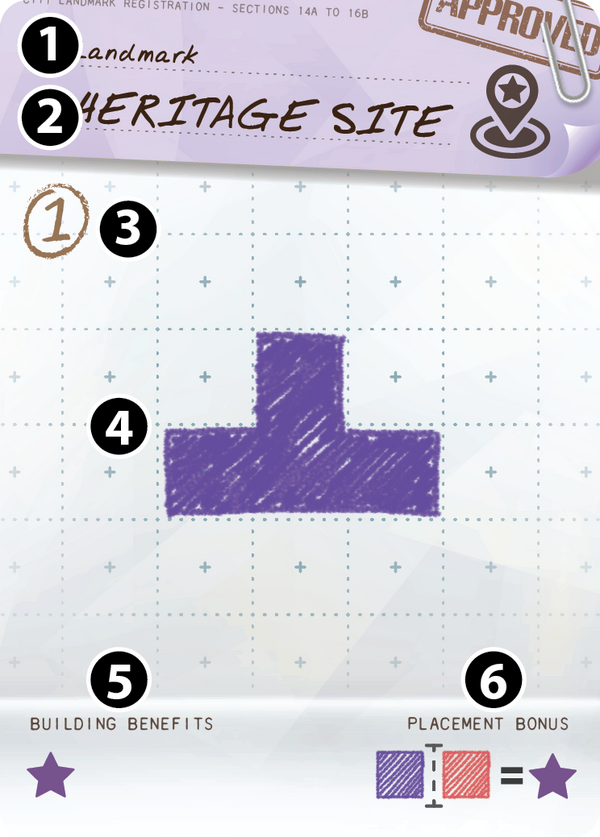
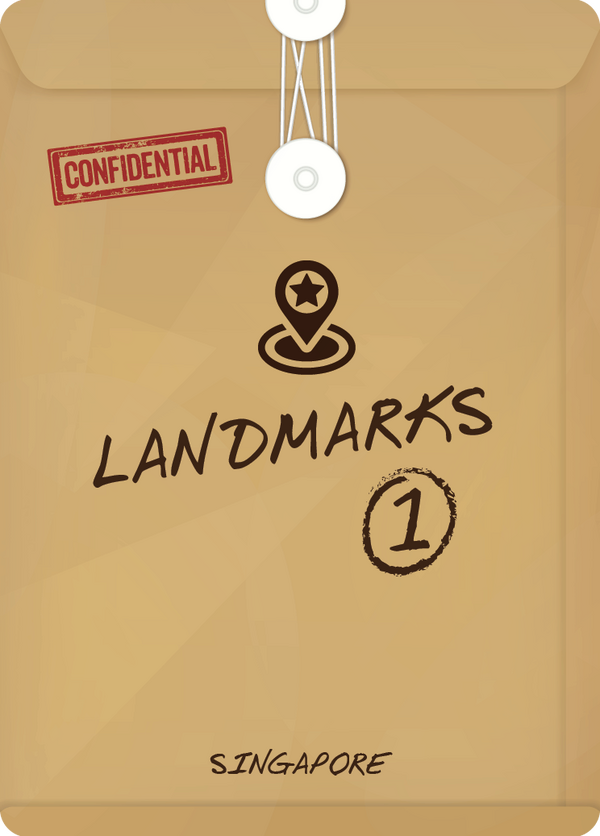
Residences
Residences are a special type of building that are not built from cards. Instead, they are built when a player receives the relevant reward.To build a residence, take the green coloured pencil, and draw a single square (1x1) on any empty space in your city. Residences do not have to be built adjacent to a road.
Tags: Buildings
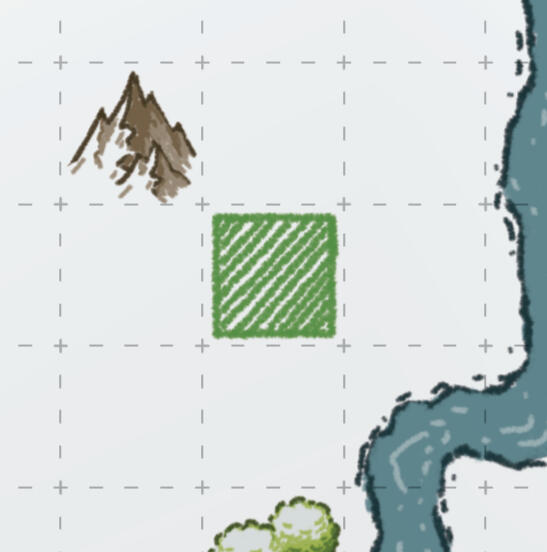
Reserved Card
At the start of each Era, players are dealt three building cards each. During each round of the game, players will choose two cards from their hands, one to build a building, one to build a set of roads. The remaining, unselected card is reserved. Reserved cards are set aside face-down.The effects on some rewards interact with reserved cards.At the end of each round, all players pass their chosen cards to the player to their left. They then add their reserved card to the cards they received to form a new hand of three cards.
Tags: Gameplay
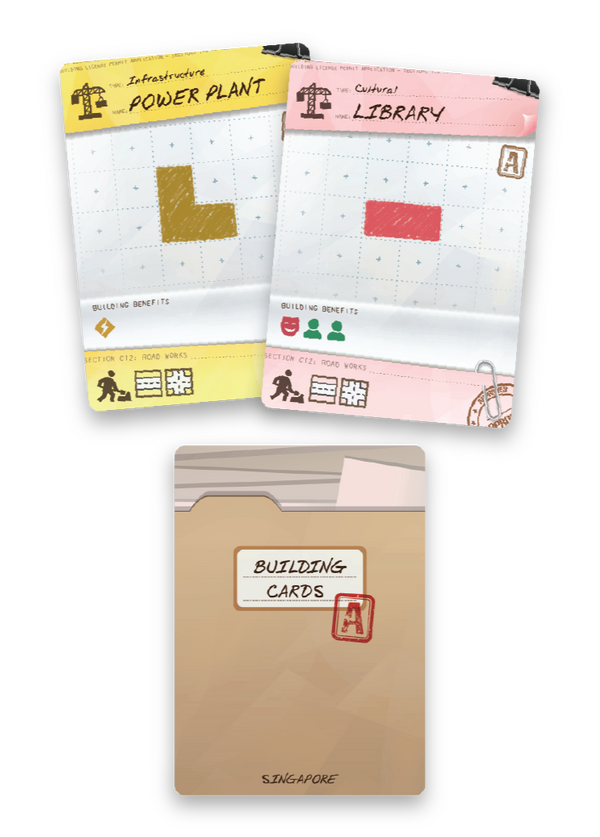
Roads
Roads are found on building cards, and come in several different types:- Single road
- Junction
- Bus stop
- Bridge
- TunnelPlayers can build any road as a single road instead.To build a set of roads, take a black pencil, then draw the roads shown on the card in any order of your choosing. Important: Roads must always be built connected to an existing road in your city.Mistakes or misplacements made in the current round may be corrected, but you cannot redo or build over buildings and/or roads from previous rounds.Building roads is optional, and players may choose not to build roads or to build fewer roads then what they were entitled to.You do not get benefits from building roads.At the start of each Era, players build a new road. They draw a single road on any empty space along the edge of their city. Players are free to choose either a straight road or a turn, and must connect the road to the edge.
Tags: Roads
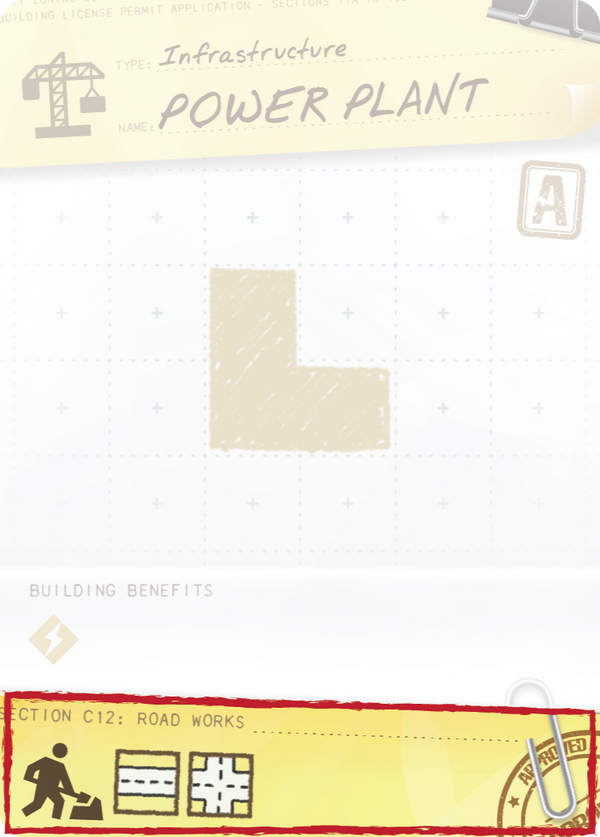
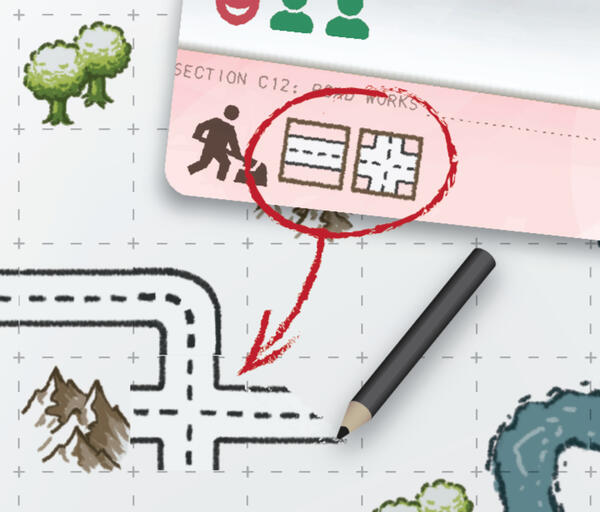
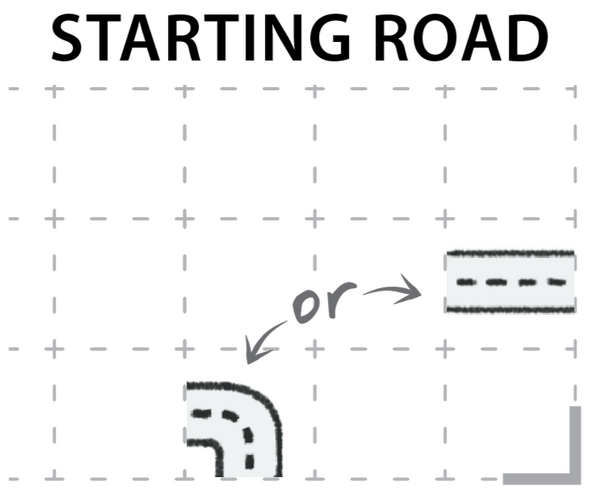
Single road
A road that connects one edge to another. Can be a straight road or a turn.
Tags: Roads

Junction
A road that connects all four edges to each other.
Tags: Roads

Bus Stop
A straight road with a bus stop.Waterway Map Pack: The Commute scoring bonus scores prestige for each bus stop built.Hillview Map Pack: Bus stops are used in bus routes to move the bus, contributing to the City Attractions scoring bonus.
Tags: Roads


Tunnel
A straight road consisting of two parts that can skip up to 3 spaces. Start by building the entrance, then skip up to 3 spaces in a straight line, then build the exit. Label both the entrance and exit so they are connected.Like single roads, you may choose to bend the roads coming out of the entrance and/or exit.You may skip over any spaces when building tunnels, including those containing buildings and features. Empty spaces between the tunnel entrance and exit can be built on normally, but they do not count as roads or count towards the length of the road. The tunnel entrance and exits do not limit building placement; you may place buildings adjacent (orthogonally) to any side of the tunnel entrnace and exits, as per the rules for building placement.If you choose to build a Tunnel as a single road, both entrance and exit must be built as single roads, you cannot build an entrance or exit by themselves.
Tags: Roads

Tracks & Rewards
Each Map has several tracks that represent the development indexes of their city.Players rise on each track when they gain benefits. Some spaces on the tracks contain rewards that grant one-time effects for the player that gained them.Some rewards are triggered rewards that may be used at a time of a player's choosing.Refer to the rewards for each map below:
- Waterway
- Hillview
Tags: Rewards
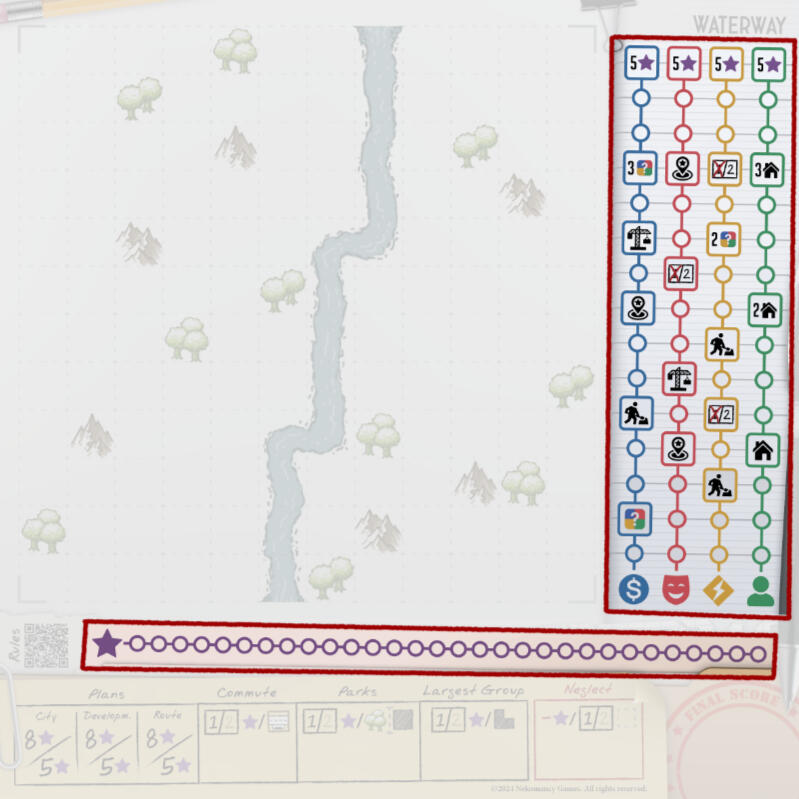
Triggered Rewards
Unlike normal rewards, triggered rewards can be used at a time of your choosing.When you gain a triggered reward, check the circle at the corner. Cross out the reward when you expend it.Refer to the rewards for each map below:
- Waterway
Tags: Rewards, Hillview

Rewards (Waterway)

Increase a step on a track of your choice, except Prestige.
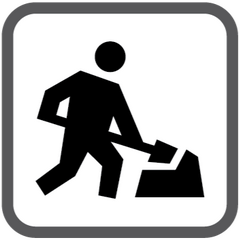
Build the roads on your reserved card.
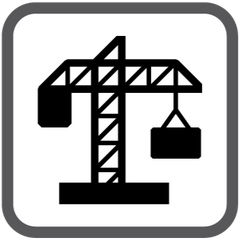
Build the building on your reserved card, then gain any benefits from building it.

Build a residence anywhere on your map. Residences are single squares that occupy one empty space, drawn in a green color.

Improve an end-game scoring bonus. Cancel the value on the left of the box, and fill in the faded-out value on the right. If during scoring, this reward causes a decimal value, round it down to the nearest whole number.
Tags: Rewards, Waterway
Rewards (Hillview)


Increase the indicated amount of steps on tracks of your choice, except Prestige.

Build a residence anywhere on your map. Residences are single squares that occupy one empty space, drawn in a green color.

Build a bus stop.
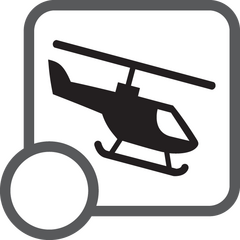
This is a triggered reward. When you build a building, expend this reward to ignore the requirement to build adjacent to a road.
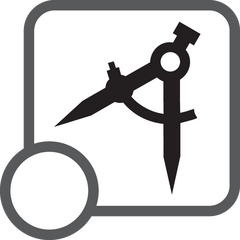
This is a triggered reward. When you build a building, expend this reward to flip the shape of your building, or to build it as a type of your choice.
Tags: Rewards, Hillview
Scoring Bonuses (Waterway)
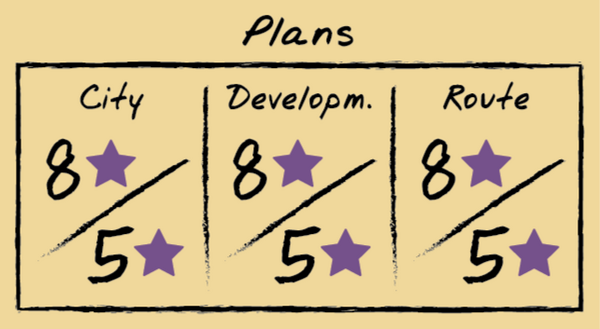
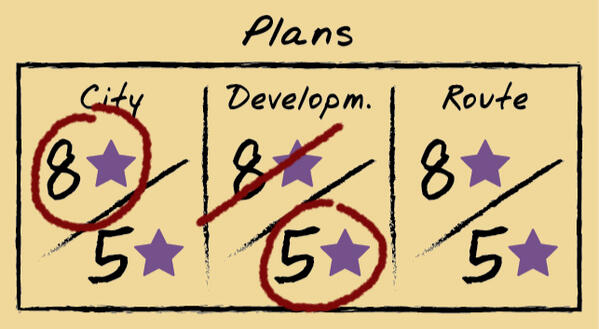
Plans
The Plans scoring bonus gives prestige for completing Plans.When a player completes a plan, if they were the first (or tied for first) to complete it, they circle the 8 Prestige space in the appropriate column to indicate that. All other players strike out the 8 Prestige space in that column. When they score the same plan later, they circle the 5 Prestige space.At the end of the game, for each space circled, players gain the indicated Prestige and add it to their final score.

Commute
The Commute scoring bonus gives prestige for each bus stop. Bus stops are a type of road.
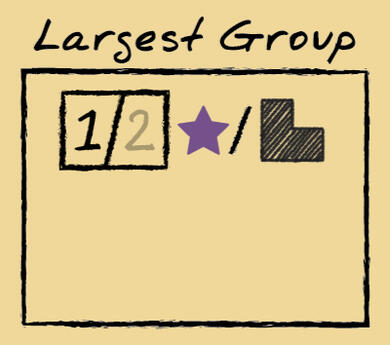
Largest Group
The Largest Group scoring bonus gives prestige equal to the number of buildings in the largest contiguous group in a player’s city.
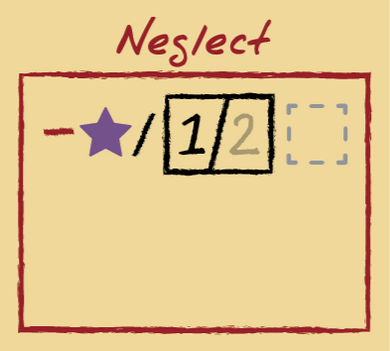
Neglect
Neglect is a scoring penalty that deducts prestige for empty spaces in a player’s city.
Tags: Scoring Bonuses, Waterway
Scoring Bonuses (Hillview)

City Attractions
The City Attractions scoring bonus gives prestige for using Bus routes to draw check marks on Buildings and Features.At the end of the game, check each column to see if you met or exceeded the condition listed. If you do, circle and score the amount of prestige indicated below it.
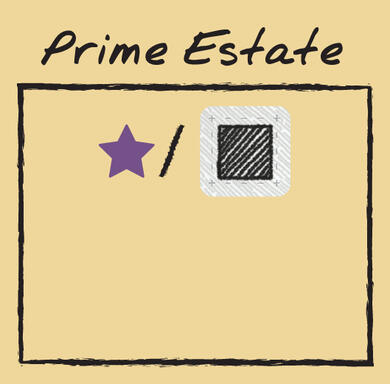
Prime Estate
The Prime Estate scoring bonus gives prestige equal to the number of buildings on hills.
Tags: Scoring Bonuses, Hillview
Benefits
Benefits are gained primarily from buildings. For each benefit gained, fill in one unfilled space on the appropriate track, starting from the bottom of each track (the space closest to the benefit icon). If you fill in a space with a reward, you immediately gain it.Some buildings may also have Placement bonuses, which grant additional benefits.From left to right, the benefits are Trade, Culture, Utilities, Residents, and Prestige.





Tags: Benefits
Placement Bonuses
Some buildings or landmarks grant additional benefits when placed adjacent to one or more specific features or building types (Note: Adjacency is only counted orthogonally, not diagonally).Example (top): When this building is built adjacent to a Cultural (Pink) type building, fill in one space on the Residents track.Example (middle): When this building is built adjacent to the corner of your city, fill in one space on the Utilities track.Example (bottom): When this building is built adjacent to an Infrastructure (Yellow) type building AND a Woods feature, fill in two spaces on the Prestige track.
Tags: Benefits
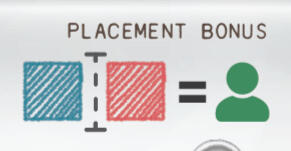
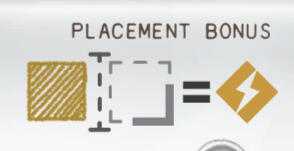

Plans
Plans are a type of card that come in three different varieties: City, Development, and Route. Plans are unique to each City deck.Each plan specifies a goal for players to achieve. During a round, after gaining benefits and rewards, all players declare if they have completed any plans. To complete the plan and gain their rewards, they refer to the reference cards of their current map. Each map has its own unique reward for the completion of plans.Waterway Map Pack: Completing plans rewards Prestige with the Plans scoring bonus.Hillview Map Pack: Completing plans lets you build a Hillview Landmark.Refer to the plans for each deck below:
- Singapore
Tags: Plans
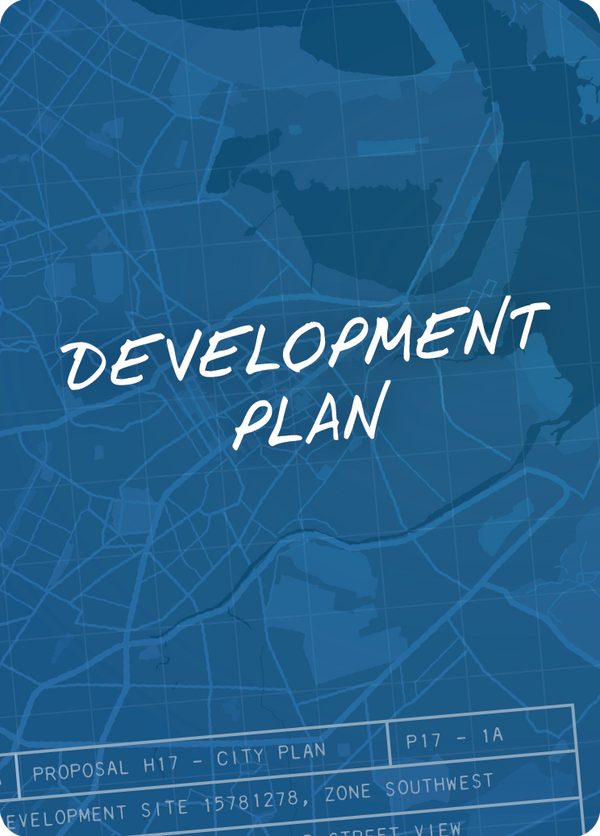
Plans (Singapore)
Hover over or tap on each card to read more.

(D1) COASTAL DEVELOPMENT: Fill up all empty spaces on ANY one edge of your city.
Empty spaces are those that do not contain buildings, roads or features.
An edge is any column or row that is along the edges of your city.
(D2) FOCUSED DEVELOPMENT: Fill up all empty spaces on ANY one quadrant of your city.
Empty spaces are those that do not contain buildings, roads or features.
A quadrant is a 6 by 6 square area of spaces touching any corner of your city.
(D3) CENTRAL DEVELOPMENT: Fill up all 16 empty spaces in the middle of your city.
Empty spaces are those that do not contain buildings, roads or features.
The 16 spaces constitute the 4 by 4 grid of spaces in the middle of your city.
(D4) RURAL DEVELOPMENT: Fill up all empty spaces in the corners of your city.
Empty spaces are those that do not contain buildings, roads or features.
(C1) CITY COMMUNES: Have 4 buildings that are adjacent to NO other buildings.
Residences (drawn in green) are not counted for this plan, nor does their adjacency affect other buildings.
Adjacency is only counted orthogonally, not diagonally.
(C2) CITY BLOCKS: Have a contiguous 3x3 square that consists of buildings.
Residences (drawn in green) are not counted for this plan. Otherwise, the number or type of buildings used does not matter, so long as there is a 3x3 square of 9 spaces.
(C3) CITY VISTAS: Fil up all spaces adjacent to one mountain using buildings.
Residences (drawn in green) are not counted for this plan.
Adjacency is only counted orthogonally, not diagonally.
(C4) CITY HUBS: Have a contiguous group of 5 buildings.
Residences (drawn in green) are not counted for this plan.
Buildings are considered contiguous if they are adjacent. Adjacency is only counted orthogonally, not diagonally.
(R1) EXPRESS ROUTE: Have one road that spans every space in one row OR column of your city.
The road must be a single, unbroken road. Spaces skipped by Tunnels are not counted. Roads that are adjacent but not connected are not counted.
(R2) CIRCULAR ROAD: Have one road that encircles at least 10 spaces, filled or empty.
The road must be a single, unbroken road. Spaces skipped by Tunnels are not counted. Roads that are adjacent but not connected are not counted.
(R3) LONG ROUTE: Have one road that spans 25 unique spaces, without counting branches.
The road must be a single, unbroken road. Spaces skipped by Tunnels are not counted. Roads that are adjacent but not connected are not counted.
(R3) SCENIC ROUTE: Have one road that is adjacent to a woods, mountain, river and landmark.
The road must be a single, unbroken road. Spaces skipped by Tunnels are not counted. Roads that are adjacent but not connected are not counted.
Tags: Plans, Singapore
Features
On each map sheet, within the city grid, there are several features found within the spaces that represent the natural features of the land.Features may affect buildings, roads, plans, scoring bonuses and placement bonuses.There are several types of features:
- Woods
- Mountains
- Rivers
- Hills
Tags: Features
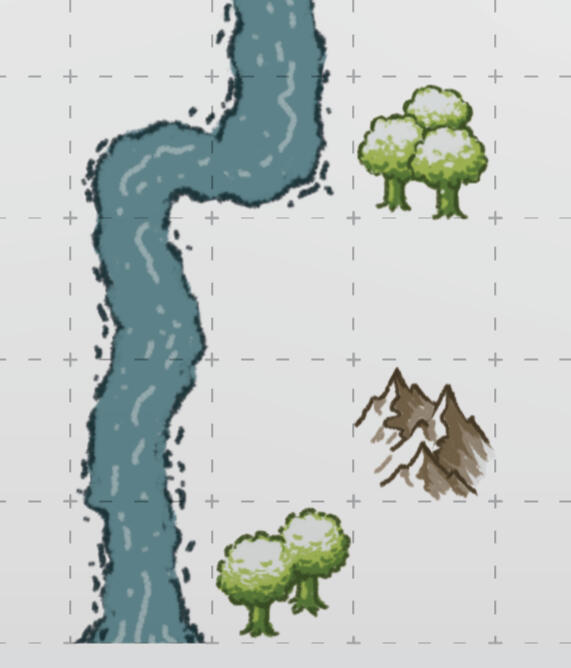
Woods
Woods can be built over with buildings and roads.Waterway Map Pack: The Parks scoring bonus scores Prestige for each Woods adjacent to at least one building.Hillview Map Pack: If built over, lose any check mark drawn on the Woods.Note: There is no gameplay distinction between the different visuals for woods, it is purely an aesthetic touch.
Tags: Features


Mountains
Mountains cannot be built over.Note: There is no gameplay distinction between the different visuals for mountains, it is purely an aesthetic touch.
Tags: Features


Rivers
Rivers cannot be built over, except for bridges.Note: There is no gameplay distinction between the different visuals for rivers, it is purely an aesthetic touch.
Tags: Features
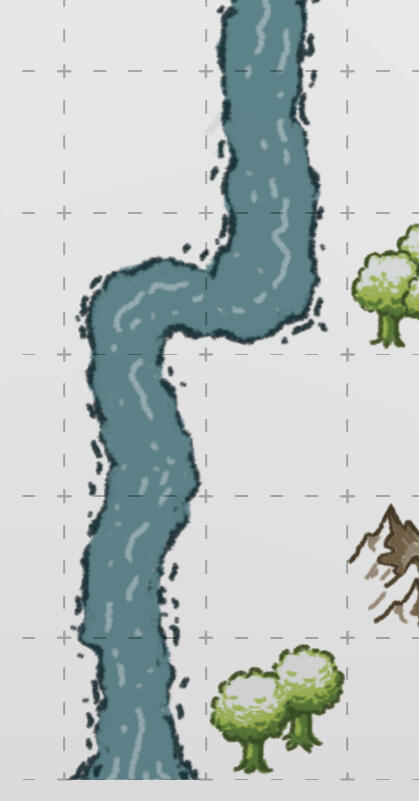
Hills
Hills consist of a group of shaded spaces, with defined edges.Hill spaces can be built over with buildings and roads.Spaces separated by a hill’s edge are considered not adjacent to each other, except for roads, which may connect to other roads across a hill’s edge.Buildings cannot be built across a hill's edge.Hillview Map Pack: The Prime Estate scoring bonus awards Prestige for each building built on hills.
Tags: Features, Hillview
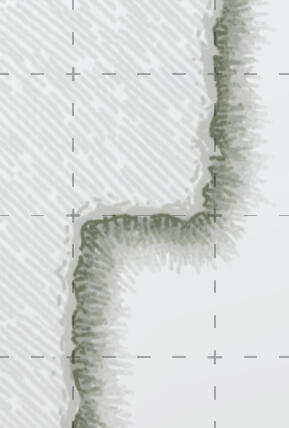
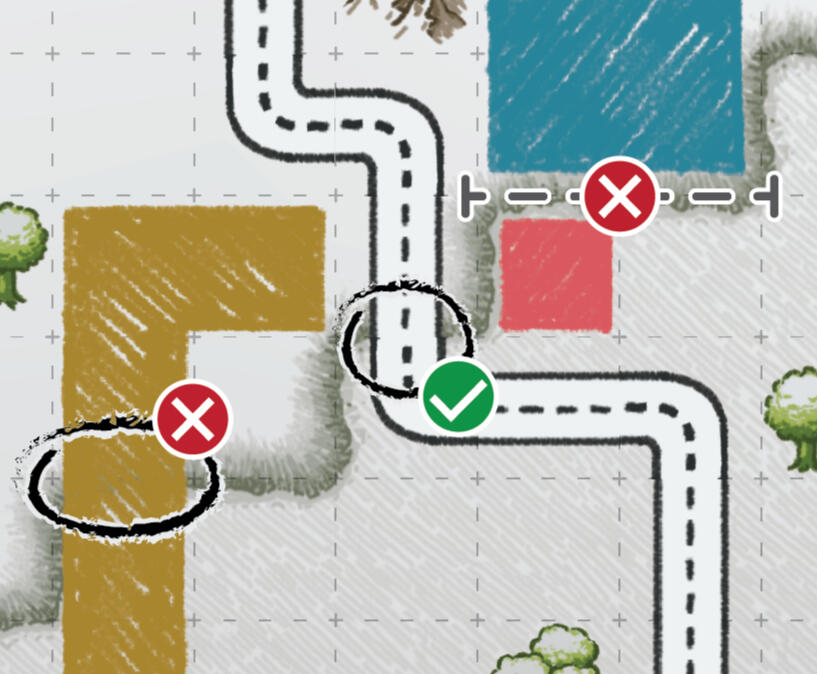
Solo Play
To play solo, several rules are modified:- At the start of each era, after dealing 3 cards to yourself, do not return the remaining cards to the box. Leave them in the play area.- At the end of each round, instead of passing cards, discard the two cards you chose and draw two new cards from the deck.- At the end of the game, compare your final score to the chart below to determine how well you played:
| ~49 | 50 ~ 59 | 60 ~ 69 | 70 ~ 79 | 80 ~ 89 | 90+ |
|---|---|---|---|---|---|
| Beginner | Experienced | Veteran | Expert | Master | Legend |
Deck or map specific rules:Waterway Map Pack: At the start of both Era B and C, choose any one of the plan scoring bonuses that you have not yet scored and strike out the 8 Prestige value in that column. Skip this step if all plan scoring bonuses have been scored.Hillview Map Pack: At the start of both Era B and C, choose any one unique Landmark that has the * side facing up and flip that side face down.
Tags: Solo
Hillview Landmarks
When playing with the Hillview map pack, during setup, a random Hillview Landmark is placed beside each plan, with the * side facing up.When one or more players complete a plan, they immediately build the unique Landmark beside that plan. Then, if the * side is facing upwards, flip the card face-down to the Monument side. All subsequent players that complete this plan build the Monument instead.
Tags: Buildings, Hillview
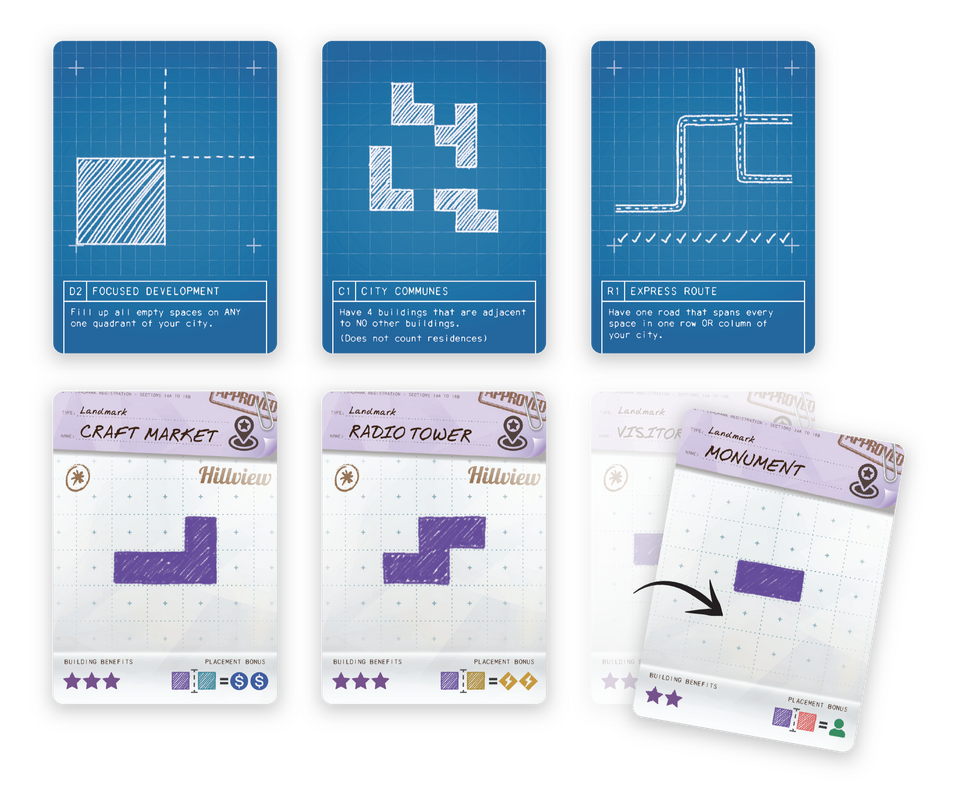
Bus Routes
At the start of Era A, after building a new road, all players draw a bus on that road. Your bus can be any shape of your choice!During the game, when a player builds a bus stop, they immediately move their bus. They draw their bus on the space where they just drew their bus stop, and cross out the previous bus.Next, they check every road space between the old and new bus positions. For each building or feature that is adjacent to one of those road spaces, draw a check mark on them.Important: Each building and feature can have a maximum of one check mark on them.At the start of Era B and C, after building a new road, players may reposition their bus to the newly drawn road, crossing out the old bus.The City Attractions scoring bonus awards Prestige for meeting conditions of having multiple check marks on types of Buildings and Features.
Tags: Hillview
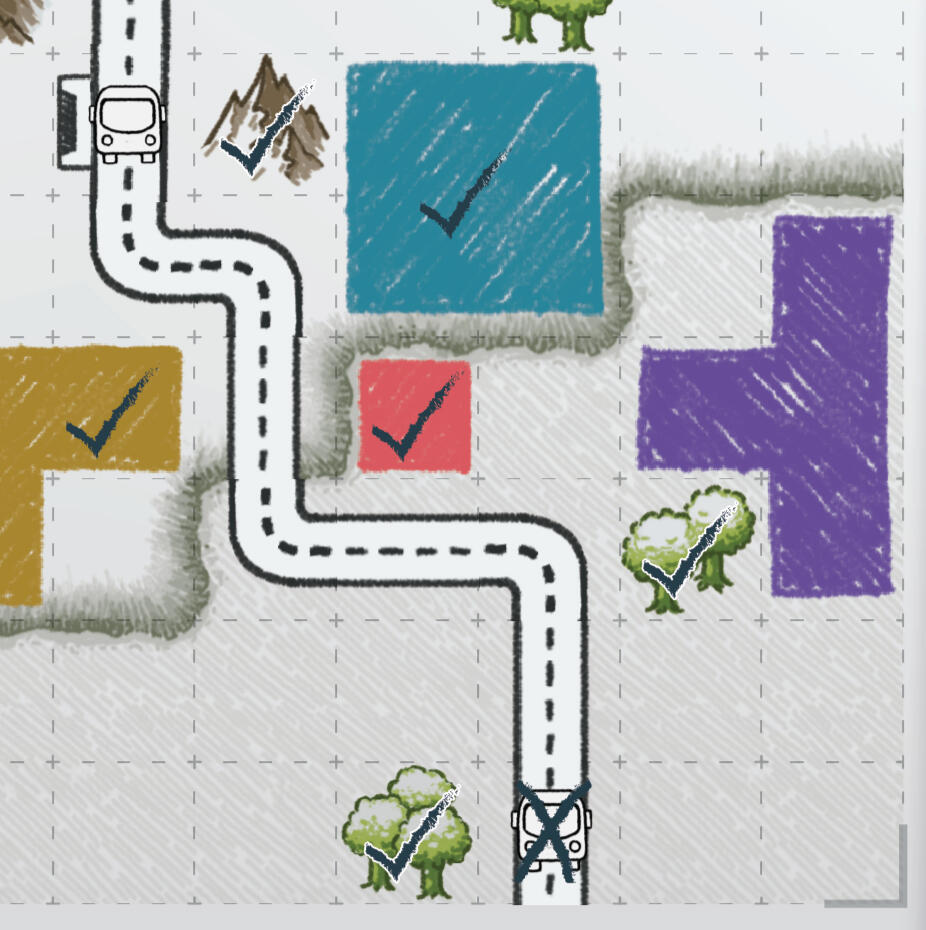
Welcome to your new city!As the mayor of a new town, you decide where and what gets built. Place buildings and roads to fulfill the requirements of Plans. As you grow, so do your progress tracks, granting you rewards the higher the go. Do your best to build the best city, as the player with the most prestigious city wins the game!
Setup
To setup a game of Scribble City, perform the following steps in order:
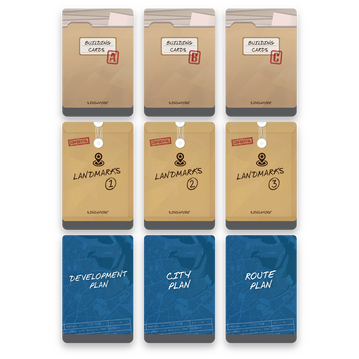
(1) Separate all cards by their card backs. Shuffle each deck.
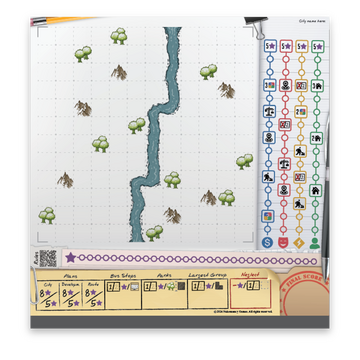
(2) Choose a map to play on, and give each player one sheet.Important: This rulebook is written with the assumption that you are playing with the Singapore city deck and the Waterway map pack. Some rules may differ when playing with other city decks and map packs.
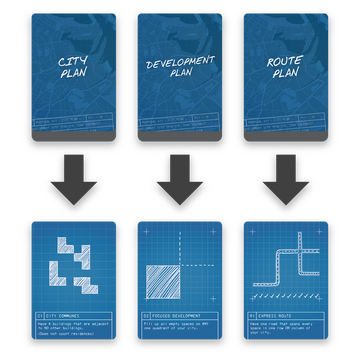
(3) From the plan cards, randomly choose one from each type (City, Development, Route) and reveal them. Return the rest to the box, they will not be used in this game.
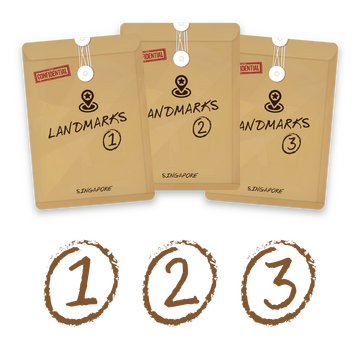
(4) Give each player three landmarks, one each from decks 1, 2 and 3. Return the rest to the box, they will not be used in this game.

(5) Give each player one black pencil, then place the other coloured pencils in a central position within reach of all players.
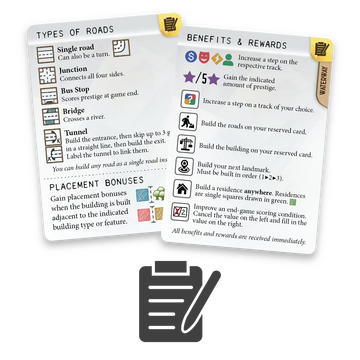
(6) Give each player a set of reference cards. Each map and deck comes with it's own reference card.
Setup is now complete!Solo Play: Some rules are modified for solo play. They are highlighted for your reference.
How to win
The goal of Scribble City is to score the most prestige. You gain prestige from buildings, landmarks, plans, and scoring bonuses.
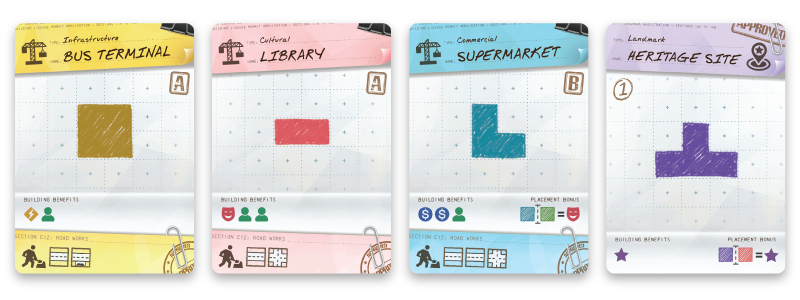
Buildings & Landmarks
Buildings and landmarks give you benefits and rewards. You may gain more benefits if you fulfill specific placement criteria.
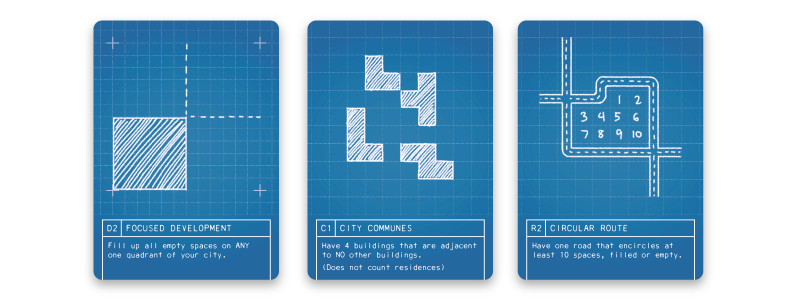
Plans
You score plans by completing the requirements stated on them. Rewards gained from plans differ depending on the chosen map.

Scoring Bonuses
On each map, there are several scoring bonuses that award prestige. There are also penalties that deduct prestige.Note: Check the rules glossary if you’d like to refer to the specific scoring bonuses for your map.
The game ends after 3 Eras. The player with the most prestige wins! Tied players share the victory.
Game Structure
The game is played over 3 Eras, each consisting of several steps:(1): Deal 3 building cards to each player.
(2): Start a new road on the map’s edge.
(3): Play 4 rounds.
(4): Discard all building cards.
(5): Proceed to the next Era, or perform scoringIMPORTANT: Note that unless otherwise specified, there are no turns while playing Scribble City - all players play simultaneously!Now, let’s look at all the steps in detail.

(1) Deal 3 building cards to each playerFrom the buildings deck matching your current Era, deal 3 cards to each player. Return any remaining cards to the game box, they will not be used.Solo play: Do not return the remaining cards to the game box, keep them aside, you will draw cards from it later.
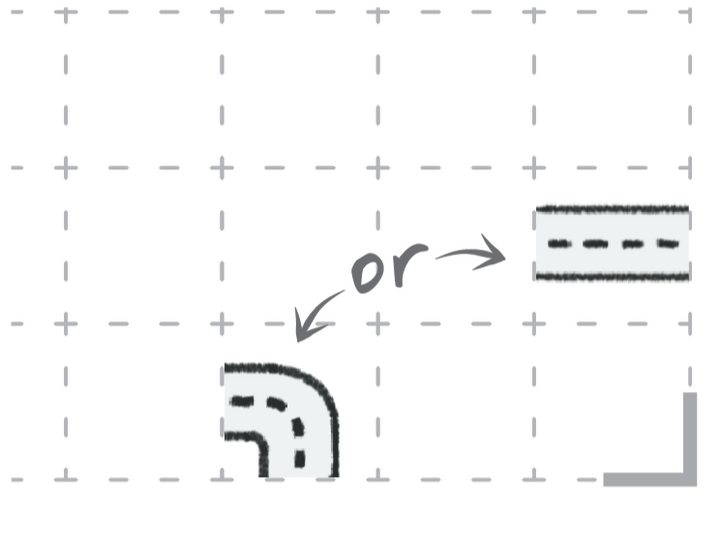
(2) Start a new road on the map’s edgeNow, let’s build our first road! At the start of each Era, all players build a new road. Draw a single road on any empty space along the edge of your city. Players are free to choose either a straight road or a turn, and must connect the road to the edge.
(3) Play 4 roundsDuring this step, we perform 4 rounds of play. Each round consists of several phases, detailed below.
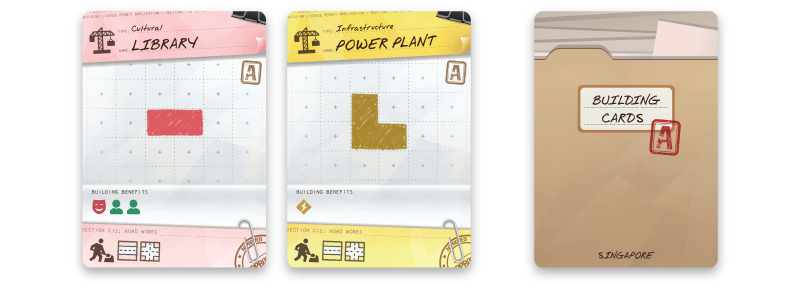
(3A) Choose cards from handFrom the 3 cards in your hand, select two of them. From one of these two cards, you will build the roads depicted at the bottom of it, and from the other card, you will build the building shown in the middle. The unchosen card is reserved and set aside for now.
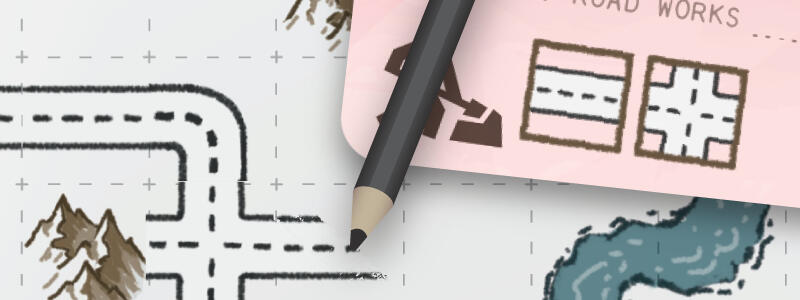
(3B) Build roadsLook at the cards you chose, each of them has a set of roads you can build. There are several different types of roads available.Once you select which set of roads to build, take your black pencil and draw those roads onto your map, in any order.IMPORTANT: All built roads must connect to an existing road on your map.You can choose to build any of your given roads as a single road instead. If you choose to build a Tunnel as a single road, both entrance and exit must be built as single roads, you cannot build an entrance or exit by themselves.


Single road
A road that connects one edge to another. Can be a straight road or a turn.

Junction
A road that connects all four edges to each other.

Bus stop
A straight road with a bus stop. Cannot be a turn. The Commute scoring bonus rewards Prestige for each bus stop built.

Bridge
A straight road that crosses a river. Cannot be a turn.


Tunnel
A straight road consisting of two parts that can skip up to 3 grids. Start by building the entrance, then skip up to 3 grids in a straight line, then build the exit. Label both the entrance and exit so they are connected. The road leading out of the entrance and exit may be drawn as a turn.
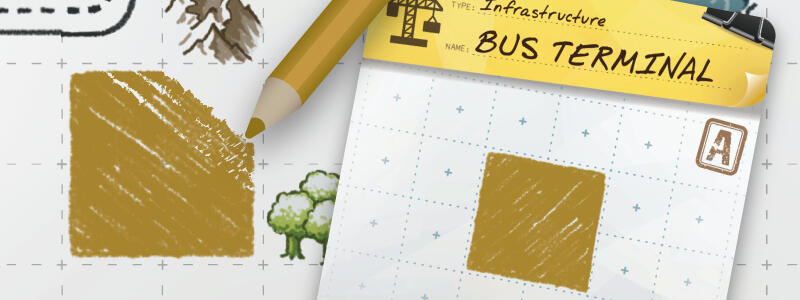
(3C) Build a buildingNext, we shall build a building! From your other chosen card, check the shape and color of your building, then draw it beside one or more of your roads in the corresponding color.IMPORTANT: Players can feel free to rotate their shapes, but they cannot flip them. You can correct mistakes made this round, but you cannot redo or build over roads and/or buildings from previous rounds!Players must build a building, if they can, even if it means drawing over a feature that can be built over, like the Woods. If unable to build, they draw a residence instead (more about residences below, in the benefits & rewards section).Maps are covered in features, which may impose limitations on the placement of buildings and roads.

Woods
Can be built over. The Parks scoring bonus rewards Prestige for each Woods adajcent to a building.

Mountains
Cannot be built over.

Rivers
Cannot be built over, except for bridges.
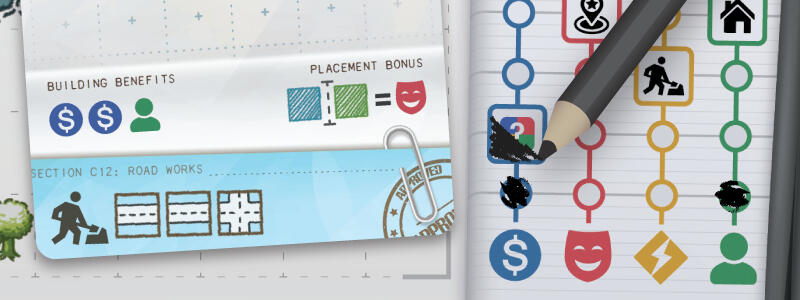
(3D) Gain benefits & rewardsAside from filling your map, buildings grant benefits! Below the building shapes, you will find one or more benefits listed. You do not get benefits from roads.Some buildings may also have Placement bonuses. If you built that building beside a specific building type or feature, you gain the bonus benefits indicated.For each benefit gained, fill in one space on the appropriate track, starting from the bottom of each track. If you fill in a space with a reward, you immediately gain it! There are many different rewards, and each does something different. (Note that the types of rewards available differ depending on which map you are playing with.)IMPORTANT: When gaining multiple benefits, players can choose the order in which they gain their benefits. You may gain some benefits first, allowing you to gain a reward, then continue gaining the rest of your benefits. Players that do not or choose not to receive their gained benefits will lose them.

Increase a step on a track of your choice.
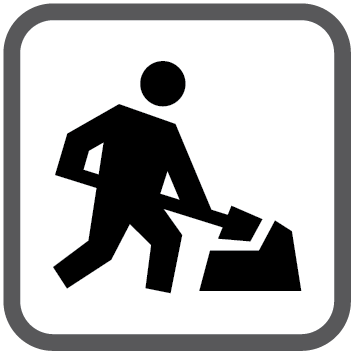
Build the roads on your reserved card.
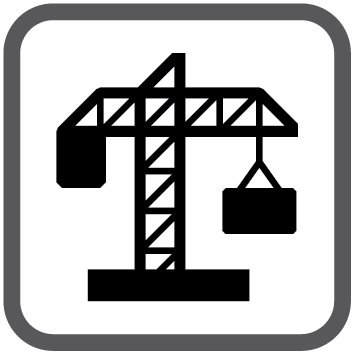
Build the building on your reserved card, then gain any benefits and rewards from building it. All rules that apply to buildings apply.

Build your next landmark. Landmarks must be built in order, starting from Landmark 1, then 2 and 3. Like buildings, Landmarks must be built adjacent to a road. Once built, gain any benefits and rewards from building it. If unable to build a Landmark due to lack of available space, this reward is forfeited, and the Landmark card is discarded.

Build a residence anywhere on your map. Residences are single squares that occupy one empty space, drawn in a green color.
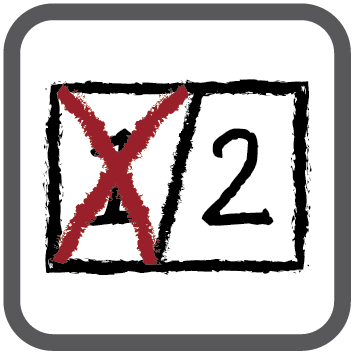
Improve an end-game scoring condition. Cancel the value on the left of the box, and fill in the faded-out value on the right.
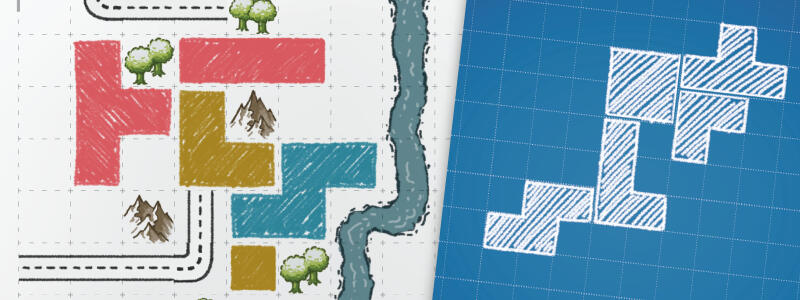
(3E) Score plans, if anyRemember those plans we revealed at the start of the game? Each of them has a specific condition that must be fulfilled before they can be scored.Players check if they have completed any of the available plans. If they did, they announce that to all players, and then check if they were the first (or tied for first). If so, all of those players circle the 8 Prestige space in the appropriate column to indicate that. All other players strike out the 8 Prestige space in that column.In future rounds, when other players score that plan, they circle the 5 Prestige space instead.During scoring, for each space circled, players gain the indicated Prestige and add it to their final score.Example (above): To score ‘City hubs’, a player must have a contiguous group of 5 buildings.Note: Check the rules glossary if you’d like to refer to how plans are scored for your map.
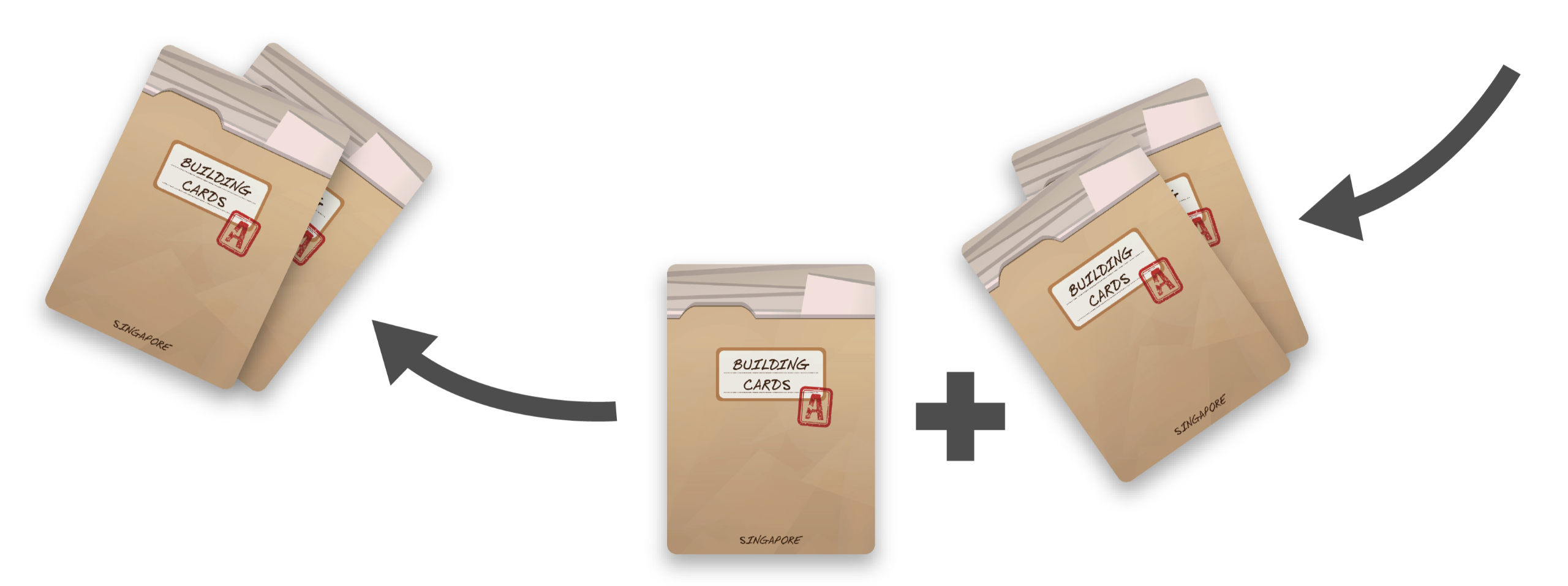
(3F) Pass cardsPass both of your chosen cards to the player on your left. Take any cards received, and your previously reserved card, to form a new hand of 3 cards.Solo play: Discard your chosen cards and draw 2 new ones instead.
And that’s the end of an entire round! If this is the 4th round, proceed to the next step. Otherwise, repeat the phases we went through (3A to 3F) to play another round.
(4) Discard all building cardsNow that we’ve completed 4 rounds in our current Era, we’re ready to proceed to the next one! All players discard the cards in their hands, returning them to the box.

(5) Proceed to the next EraIf you’re currently in Era A, take the Era B deck and place it in the middle of the play area, ready for the next Era. If you’re currently in Era B, take the Era C deck instead.Solo play: Choose any one of the Plans scoring bonuses that you have not yet scored and strike out the 8 Prestige value in that column. Skip this step if all plan scoring bonuses have been scored.Now, play the next Era by repeating the steps we went through (1 to 5).If you’re currently in Era C, proceed to scoring instead!
Scoring
After 3 Eras, the game is over, and we calculate each player’s Prestige scores to determine the winner.

Refer to the bottom of your map sheet. For each scoring bonus, calculate the total Prestige gained for that bonus and write the number below.Then, tally all your numbers together with the Prestige gained during the game to get your final score. The player with the highest prestige wins! If tied, all tied players win together!Note: Check the rules glossary if you’d like to refer to the scoring bonuses for your map.You may also refer to the scoring example below:
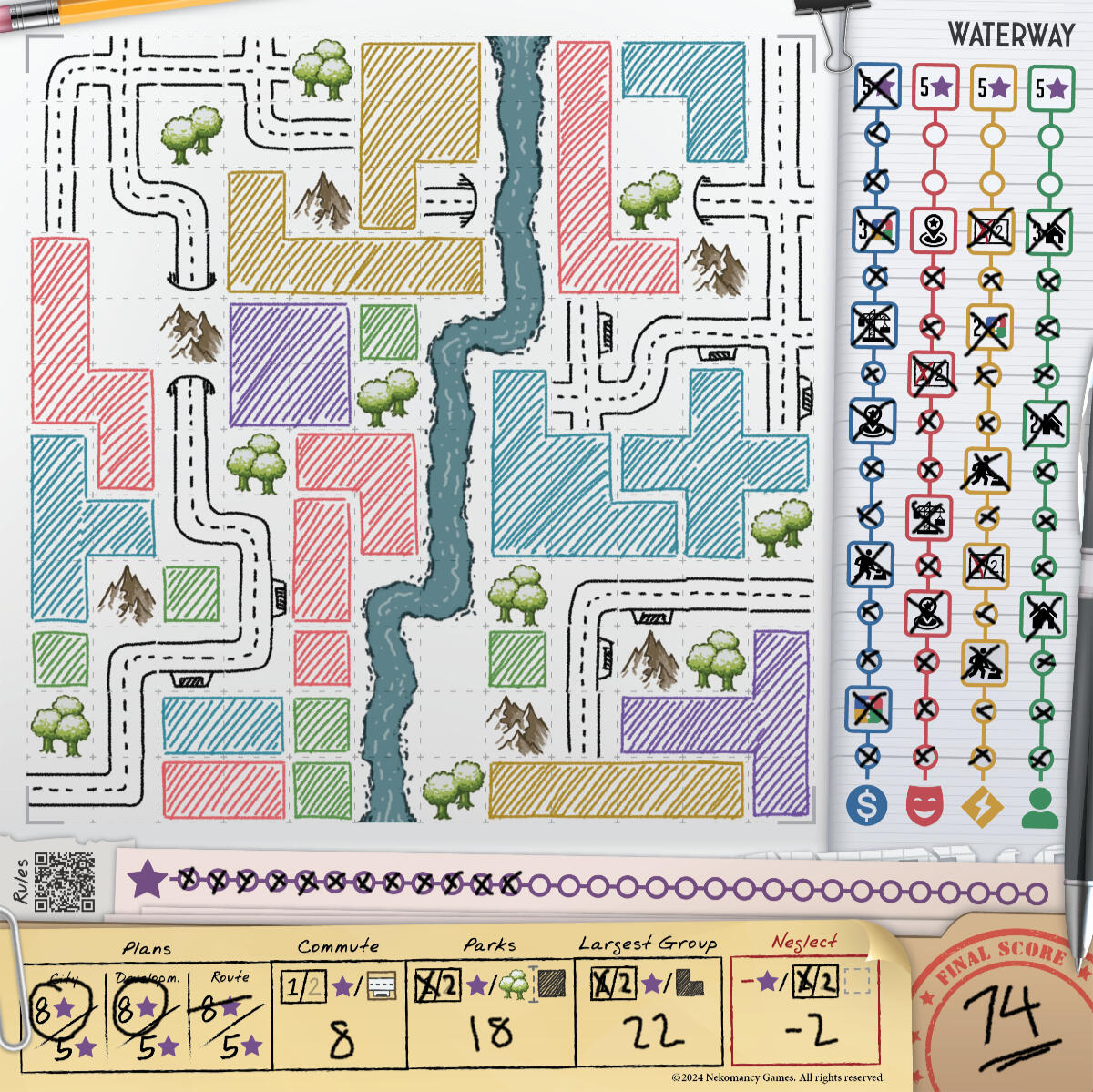
Prestige: 12 (earned during the game)Plans: 8 x 2 = 16 (for scoring 8 prestige in 2 plans)Commute: 8 (for 8 bus stops)Parks: 18 (for 9 parks, multiplied by 2 thanks to a reward)Largest Group: 22 (for a group of 11 contiguous buildings, multiplied by 2 thanks to a reward)Neglect: -2 (for 5 empty spaces, divided by 2 and rounded down thanks to a reward)Final Score: 74
Solo play: Compare your score to the chart below to determine how well you did!
| ~49 | 50 ~ 59 | 60 ~ 69 | 70 ~ 79 | 80 ~ 89 | 90+ |
|---|---|---|---|---|---|
| Beginner | Experienced | Veteran | Expert | Master | Legend |
Credits
Created by: Isaac TanManufactured by: Launch Tabletop, Misil CraftsPlaytesters: Aleksandrs Labeckis, Alvin Wong, Daryl Soh, David Goh, Edmond Tan, Gabriel Tay, James Wong, Janina Labecka, Jojo Chia, Jovi Kartolo, Jun Cheng Ang, Listya, Raihaan, Samantha Chiam, Wan Yi, Wei Jin, Wen QiSpecial Thanks: Adel©2024 Nekomancy Games. All rights reserved.
Download the PDF here.Print Instructions: This PDF is formatted to print on 3 sheets of A4 sized paper, and folded into a A5 booklet. Please follow the instructions below to print it accordingly.1. Print pages 1, 2 and 3.
2. Print page 4 on the rear of page 1.
3. Print page 5 on the rear of page 2.
4. Print page 6 on the rear of page 3.
5. Arrange the sheets so that the page numbers are accurate, then fold the stack in half. You may use staples or a clip to hold it together.
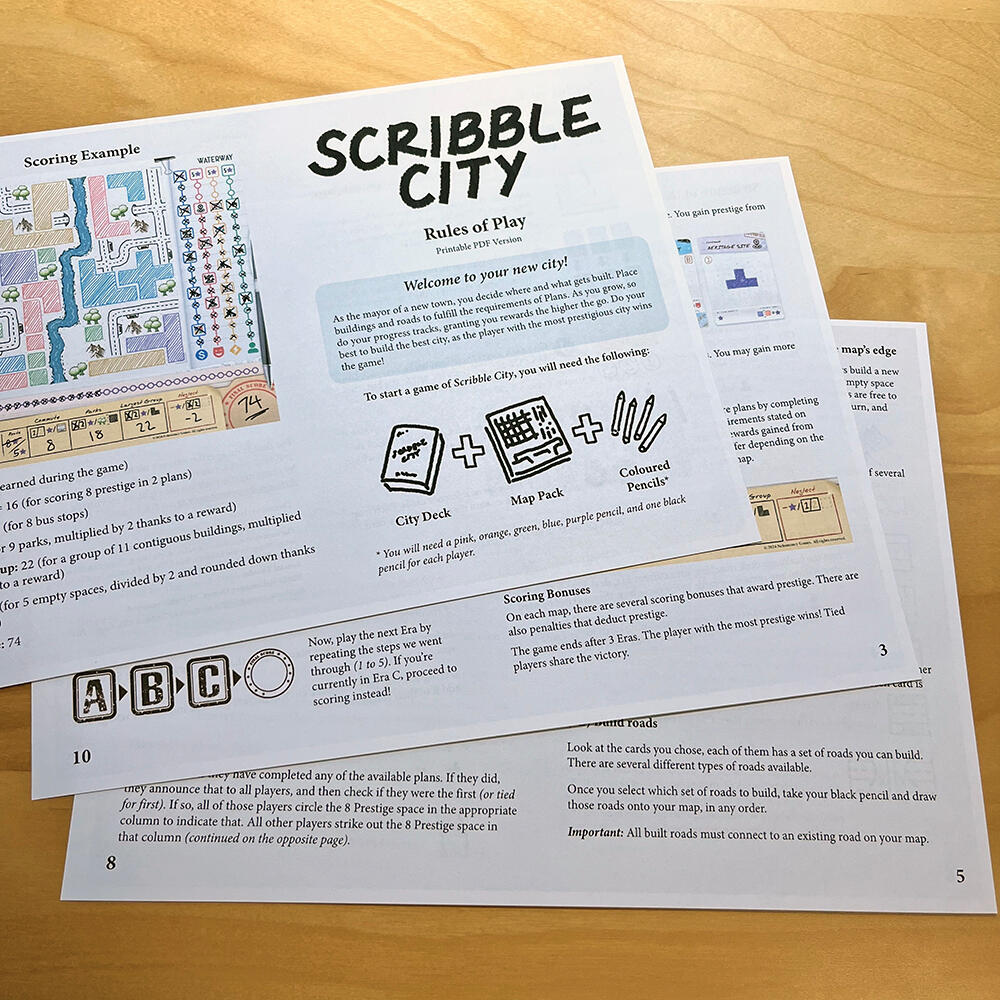
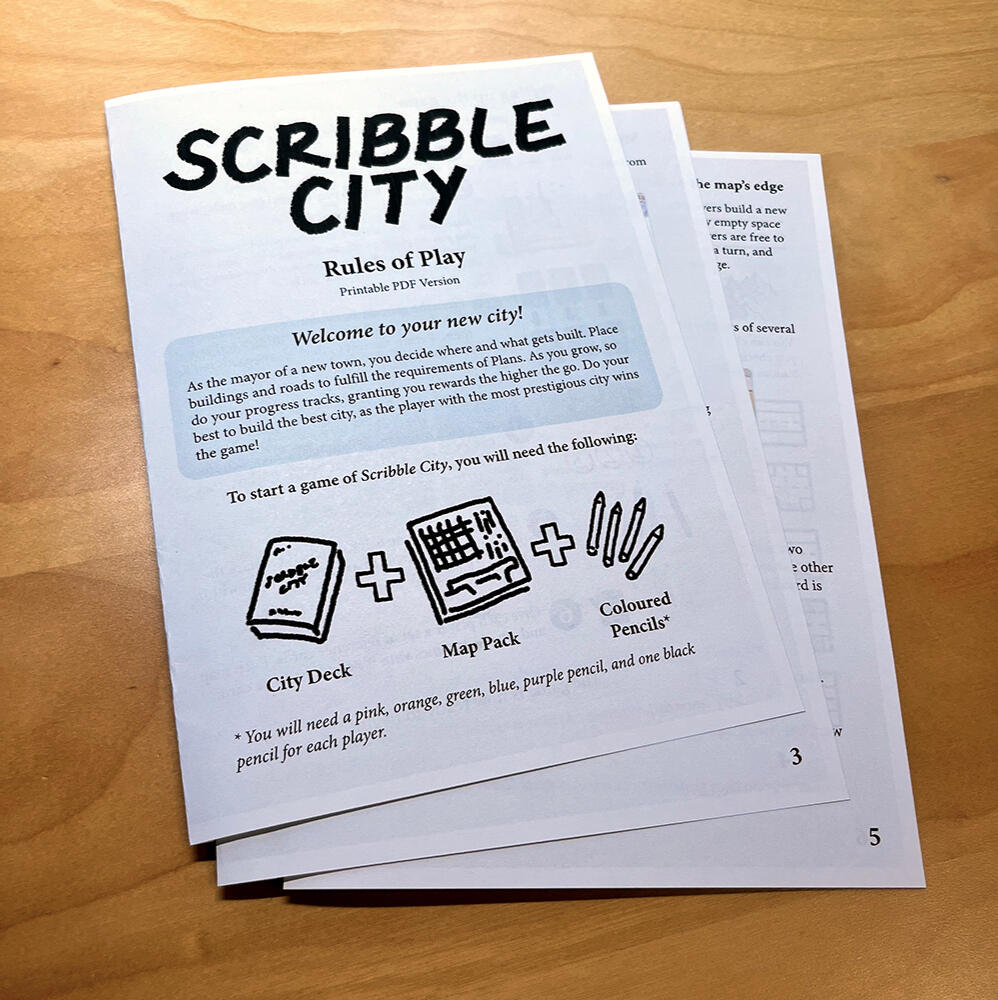
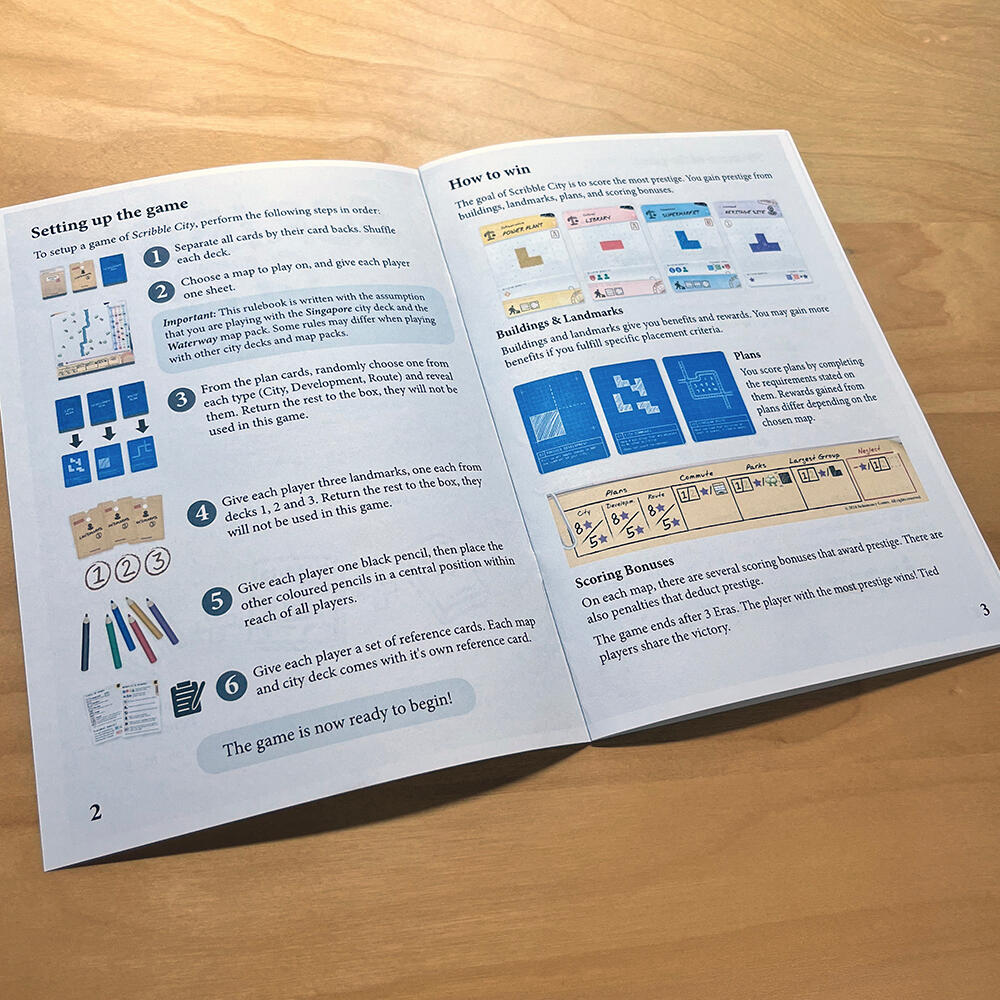
Coming Soon!

